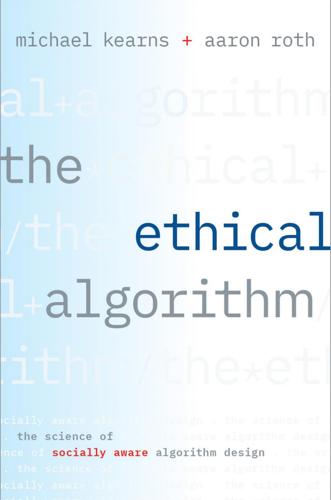
The Ethical Algorithm: The Science of Socially Aware Algorithm Design
by
Michael Kearns
and
Aaron Roth
Published 3 Oct 2019
While this phrase may bring to mind dating apps like Coffee Meets Bagel, matching markets are usually found in much more formal scenarios in which we want to pair up individuals with each other, or individuals with institutions. One long-standing application area is medical residency hiring, in which the approach we’ll describe is implemented as the National Resident Matching Program (NRMP, affectionately known as “The Match”). The basic problem formulation is as follows. Candidates for medical residencies each have an individual ranking of potential programs. For example, suppose the candidates Elaine and Saeed have the following ranked list of residencies (ignore the annotating characters for now, which we discuss shortly): Elaine Saeed Harvard Cornell Johns Hopkins UC San Diego @ UC San Diego & Harvard # Baylor Johns Hopkins Based on application materials and interviews, the schools of course also have their own ranked lists of candidates, such as: Harvard UC San Diego Saeed # Roger Elaine Saeed @ Roger Elaine & Gwyneth Mary So this is a two-sided market—candidates and hospitals—and there are also capacity constraints, because each candidate can of course take only one residency, and each hospital can only take a limited number of residents (which for simplicity we’ll assume is also just one).
…
Second, the matching computed by the algorithm is stable in the sense we described above. Algorithms generalizing to the cases where there are unequal numbers of men and women (or students and medical schools), or where one side of the market can accept more than one partner (as in medical residencies), also exist. These algorithms are in widespread practical use, including in assigning actual medical residencies and other competitive admissions settings, such as matching students to public high schools and matching pledges to sororities in universities. (In contrast, US undergraduate college admissions are generally done in a much more haphazard fashion, giving rise to experiments in admissions office gamesmanship such as early decision, early action, requiring standardized tests or not, additional essays, and the like—all to the exhaustion and frustration of applicants and their parents.)
…
Similarly, a recipient prefers to receive a transplant from a compatible donor. While there are many details that make this problem more complicated than medical residency matching, there are again practical, scalable algorithms that maximize the efficiency of the solution found, where here efficiency means maximizing the total number of compatible transplants that occur globally—ideally across all hospitals, not just within a single one. For his algorithmic and game-theoretic insights on this problem (and the others we have mentioned, including the medical residency match) and his efforts to convince the medical community and hospitals that it was worth the effort to pool their transplant donors, recipients and data, Alvin Roth was awarded the 2012 Nobel Prize in economics—along with the aforementioned Lloyd Shapley, whose early work initiated the era of algorithmic matching.

The Laws of Medicine: Field Notes From an Uncertain Science
by
Siddhartha Mukherjee
Published 12 Oct 2015
In my recollection, I also read only one book that year—a slim paperback collection of essays titled The Youngest Science—but I read it as if it were a thousand books. It became one of the most profound influences on my life in medicine. .... The Youngest Science was subtitled Notes of a Medicine-Watcher and was about a medical residency in another age. Written by the physician, scientist, author, and occasional poet Lewis Thomas, it describes his tenure as a medical resident and intern in the 1930s. In 1937, having graduated from Harvard Medical School, Thomas began his internship at Boston City Hospital. It was a grueling initiation. “Rewarding might be the wrong word for it, for the salary was no money at all,” Thomas wrote.
…
In Harry Potter, that philosophical treatise disguised as a children’s book, a teacher of wizardry asks Hermione Granger, the young witch-in-training, whether she wishes to learn the Magical Laws to pursue a career in magic. “No,” says Granger. She wishes to learn the laws so that she can do some good in the world. For Granger, magical laws do not exist to perpetuate magic. They exist as tools to interpret the world. .... In the winter of 2000, during the first year of my medical residency, I lived in a one-room apartment facing a park, a few steps from the train station at Harvard Square. Lived is a euphemism. I was on call every third night at the hospital—awake the whole night, admitting patients to the medical wards, writing notes, performing procedures, or caring for the acutely ill in intensive care units.
…
Living creatures must, of course, obey the fundamental rules of physics and chemistry, but life often exists on the margins and in the interstices of these laws, bending them to their near-breaking limit. Even the elephant cannot violate the laws of thermodynamics—although its trunk, surely, must rank as one of the most peculiar means to move matter using energy. But does the “youngest science” have laws? It seems like an odd preoccupation now, but I spent much of my medical residency seeking the laws of medicine. The criteria were simple: a “law” had to distill some universal guiding principle of medicine into a statement of truth. The law could not be borrowed from biology or chemistry; it had to be specific to the practice of medicine. In 1978, in a mordantly acerbic book called The House of God, the writer Samuel Shem had proposed “thirteen laws of medicine” (an example: “Law 12: if the radiology resident and the intern both see a lesion on an X-ray, then the lesion cannot be there”).
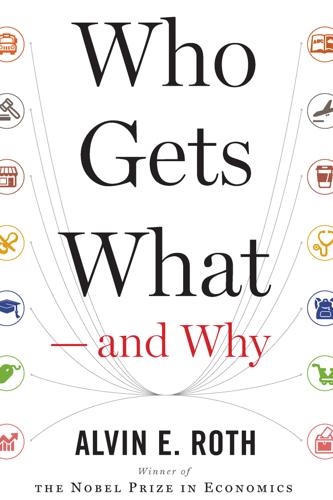
Who Gets What — and Why: The New Economics of Matchmaking and Market Design
by
Alvin E. Roth
Published 1 Jun 2015
To become a gastroenterologist, a doctor must participate in what’s called a fellowship, which takes place following his first job, or residency, after graduating from medical school. The market for medical residencies was the first unraveled market I studied. Today that market is no longer unraveled, and new doctors are matched to residencies during their last year of medical school, in a market that is thick, uncongested, and safe. (I’ll tell that story in chapter 8.) The medical residency that future gastroenterologists must complete is in the field of internal medicine and takes three years. So gastroenterology fellows could, in theory, be hired after they have three years of medical experience.
…
See also regulation cheating and, 93–98 for college bowl games, 60–65 for judicial clerkships, 92–96 unraveling markets and, 68 Rural Hospitals Theorem, 149–50 safety of market participation, 11, 113–30 in auctions, 182–84, 186–87 clearinghouses and, 112 credit cards in, 23 early transactions and, 60–80 in gastroenterology fellowships, 76–78 information sharing and, 122–28 in Boston Public Schools, 122–28 in clearinghouses, 112 for kidney exchanges, 34, 36, 37, 47–49 market efficiency and, 119–21 for medical residencies, 137–43, 150–51 in New York City schools, 109–10, 112, 153–61 in Internet marketplaces, 105 in kidney exchanges, 34, 36, 47–49, 51–52 for medical residencies, 137–43 privacy and, 119–22 reputation and, 115–16 for restaurants, 220–22 same-sex marriage, 198–99 Scarf, Herb, 32–34 Scheibe, Peter, 38–39 Scheibe, Susan, 38–39 school matching, 8, 165–67 Boston Public Schools, 11, 122–28, 162–65 in China, 165–66 constraints in, 158–61 deferred acceptance algorithm in, 157–61 inequality of schools and, 166–67 New York City school system, 8, 106–10, 112, 122, 153–61 parent preferences in, 150–51 safety of sharing preferences in, 124–30, 153–54 unraveled markets in, 73–74 searches, 6 Securities and Exchange Commission, 85 self-control, 67–68, 74–78 judicial clerkships and, 91, 93–98 as solution to early transactions, 79–80, 135–36 self-interest, 52 sex trade, 114, 214–15 Shapley, Lloyd, 32–34, 141–43, 158 Shim, John, 86, 88, 239 Shmida, Avi, 13 shopping malls, 221 signals and signaling, 6, 169–92 in auctions, 180–89 cheap talk in, 176–77 in college admissions, 169, 170–73 costly, 177–89 of desirability, 178–79 of interest, 178–80 in Internet dating sites, 169, 175–77 in job markets, 173–75 opportunity cost of, 179–80 by restaurants, 181 simplicity, 11, 26–27 in commodity markets, 15–17 in communication, 169–92 in kidney exchanges, 51–52 in navigating the system, 124–26 slavery, 199–200, 201 slippery slope, 204 smartphones Internet market congestion and, 99–106 as marketplaces, 21–22 payment systems with, 24, 26–27 privacy and, 192 Smith, Adam, 7, 206–7 social media, 169 Sönmez, Tayfun, 8, 35, 37–38, 43–44 on Boston school choice, 126–28 Sotomayor, Marilda, 146 South Korea, 171 speed of transactions, 81–99 communication and, 99–106 congestion and, 99–112 in financial markets, 82–89 in judicial clerkships, 90–98 price-based competition vs., 85–88 telegraph and the cotton market, 89–90 Spread Networks, 83 stable outcomes, 139–43, 157–58 Standage, Tom, 89 standardization, 17–20, 22 Standard & Poor’s 500 (SPY), 82–89 Starbucks, 18, 19 Starzl, Thomas, 34 stockbrokers, 48 strategic decisions, 10–11 allowing time for, 92–93, 154 congestion and, 99–106 for judicial clerkships, 69–70, 92–98 on marriage, 70–74 in school matching, 124–30, 153–55, 161, 163–65 speed of information in, 89–90 StubHub, 104 Sugar Bowl, 62 surrogate babies, 201–2 taxi drivers, 114 telegraph, 89–90 thick markets, 8–9 Amazon, 21 for college bowl games, 63–64 for commodities, 17 congestion in, 9–10, 99–112 credit card, 23–24 differentiation in, 18–20 early transactions and, 57–80 early transactions in, 57–80 in financial markets, 82–89 for kidney transplants, 49–51 New York City school system, 107–10 platform changes and, 26–27 for restaurants, 217–20 self-reinforcing, 21 signaling in, 179 transaction speed in, 81–99 ticket re-sales, 104 timing of transactions in college bowl games, 59–65 congestion and, 80, 99–112 in Internet marketplaces, 101–6 Internet markets and, 20–26 market thickness and, 8–9 too fast, 81–99 too soon, 57–80 trading cycles, 32–41 transactions early, 57–80 monetization of, 202–5 protected, 198 time to evaluate, 9–11 timing of (See timing of transactions) trading cycles and, 32–41 trust in Boston Public Schools system, 123–28 at eBay, 117–19 gastroenterology fellowships and, 76–78 in Internet marketplaces, 105 in New York City school system, 108–10, 112 regulation and, 222–23 reliability and, 116 reputation and, 115–16 Uber, 103–4, 116 UberX, 104 United Network for Organ Sharing (UNOS), 50 University of Cincinnati Medical Center, 39–41 University of Oklahoma Sooners, 59 University of Pittsburgh, 34, 45, 174–75 University of Toledo Medical Center, 29–30 UNOS, 50 unraveled/unraveling markets.
…
What these directors didn’t appreciate—until they saw our results—was that this local hiring was happening to everyone. Only then did they all realize that their own problem was in fact market-wide. As you might imagine, that generated a lot of interest in hiring later. Muriel and I eventually helped them to plan a clearinghouse that operated later in the careers of medical residents, like the one that matched new doctors to residencies. But those same fellowship directors didn’t trust each other to cooperate and wait for the clearinghouse; they all worried that the others would continue to hire via early exploding offers. If they waited to take part in the clearinghouse, they feared all the best candidates would already be hired.

When the Air Hits Your Brain: Tales From Neurosurgery
by
Frank Vertosick
Published 1 Jan 1996
In the back corner of the pizza parlor a table was crammed with medical residents dithering about some liver syndrome, their stethoscopes draped around their necks and their coat pockets jammed with standard-issue medical resident paraphenalia: the Washington Manual, index cards, photocopies of New England Journal articles, syringes. The pediatric residents were essentially medical residents with small teddy bears wrapped about their pastel-colored stethoscopes and an empathetic gaze permanently welded onto their faces. As we passed the table of medical residents, Gary glanced back at me and began scratching violently at the back of his right ear with his cupped hand, imitating a dog scratching a flea.
…
We thought the worst had passed when a sixth “Dr. White” directed us to a private room on the ninth floor. Rushing to the room, we found a very aged but otherwise quite robust-looking gentleman reading the Wall Street Journal and sipping coffee. “Who called a cardiac arrest here?” angrily demanded the senior medical resident on the resuscitation team. “I didn’t call any cardiac arrest, young man; I simply asked the operator to send Dr. White to my room. My own internist isn’t worth a damn and people have been calling for this Dr. White character all morning. I felt he must be pretty damned good if he’s in so much demand.”
…
I felt he must be pretty damned good if he’s in so much demand.” Thankfully, the V.A. had no public-address system. The operator merely summoned the designated arrest team through their beepers. As a third-year student on the medicine rotation, I was assigned to the arrest team for the evening every other night. The team consisted of the senior medical resident, Kate; my intern, Jim; a fourth-year student, Pam; and me. At least once a night we answered the call of our whining arrest beepers. We would run a dozen flights of stairs to the designated location and arrive to find some unfortunate soul who had, in euphemistic hospital lingo, CTB’d, or “ceased to breathe.”

What Doctors Feel: How Emotions Affect the Practice of Medicine
by
Danielle Ofri
Published 3 Jun 2013
There was an embarrassing moment as the fellow and I instantly recognized each other—Mitchell had been in my medical-school class. We’d spent the first two years of school together, even traveled in the same circle of friends. But because of the years I’d taken to do my PhD, he’d completed his training before me and was now a senior cardiology fellow while I was a third-year medical resident. It was evident that if he hadn’t known me from med-school days he would have dressed down the medical consult for not running the code more aggressively. He bit back his comment, sidled over to me, and leaned in to look at the EKG. “Peaked T waves, hyperkalemia,” he announced clearly, though not derisively—an act of humanity that allowed me a modicum of dignity.
…
No one had taken the time—or had the time—to read the actual note to see that further monitoring was recommended, that the patient was still considered suicidal. Seeing the resident walk by, though, shot an idea into my head. I called Mount Sinai back and asked for the page operator. “This is Dr. Ofri,” I said, corralling some authoritative heft into my voice. “Please page the admitting medical resident for me.” The operator didn’t say a word or even ask if I was a Mount Sinai doctor; she simply patched through what must have been her 1,357th page of the day. Thirty seconds later a young voice was on the line. I quickly explained that I was a medical attending at Bellevue and that we’d transferred a patient to Mount Sinai this evening.
…
I felt a surge of pride as we watched our patient gain consciousness, get cranky, and then demand double meal portions. Our patient’s glucose returned to normal. With palpable triumph, I handed a “d/c insulin drip” order to the nurse. I was officially declaring our patient cured. The nurse took the order from me while passing a bottle of saline to another medical resident. “Do you want to give an injection of long-acting insulin before stopping the drip?” she asked me as the clerk pressed two more charts in her direction. I thought for a moment. Why would I want to use the sledgehammer of long-acting insulin after eight hours of our meticulous adjustments with the insulin drip?
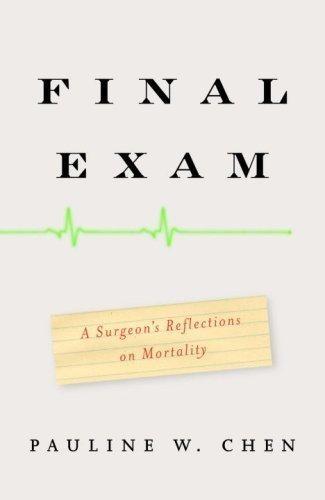
Final Exam: A Surgeon's Reflections on Mortality
by
Pauline W. Chen
Published 1 Jan 2006
Moreover, because of lack of discussion or emotional reaction from others around them, students often inferred that avoidance and continuing with work were appropriate coping reactions. Rhodes-Kropf et al., “Medical Students’ Reactions.” 27 But when I looked over at Bill to ask: In a recent survey, only one of forty-seven medical residents reported having had formal training either in medical school or during residency on how to determine death. Ferris et al., “When the Patient Dies.” Chapter 3 SEE ONE, DO ONE 28 Premedical students overwhelmingly believe: Chuck, “Do Premedical Students Know.” 29 “of all the professions”: Nuland, How We Die. 30 Attracted to medicine: Others have referred to this heightened anxiety over death among medical students and physicians and to the use of denial as a coping mechanism.
…
Jackson et al., “Powerful Patient Deaths”; Sullivan et al., “Status of Medical Education.” A substantial percentage of trainees do not discuss deaths with their attendings, and when they do, the education and the support they receive is inadequate. Redinbaugh et al., “Doctors’ Emotional Reactions”; Schwartz et al., “Medical Residents’ Perceptions.” Most residents instead tend to rely on talking with their peers, the other residents. Redinbaugh et al., “Doctors’ Emotional Reactions.” 33 we learn that many of them: In a recent survey of medical students, residents, and attendings on attitudes and experiences related to end-of-life care, researchers noted a large discrepancy in refusal rates.
…
Liu, “Error in Medicine.” Internal medicine educators, like surgeons, are also working to restructure and redefine the role of M and M in education. Orlander et al., “Learning from Error”; Orlander and Fincke, “Morbidity and Mortality Conference”; Pierluissi et al., “Discussion of Medical Errors”; Schwartz et al., “Medical Residents’ Perceptions.” Chapter 6 THE VISIBLE WOMAN 65 To do otherwise would be to admit: MacLeod wrote of doctors discussing such “turning points”: “[H]alf of the respondents wept as they recounted their stories…. The doctors seemed to lower their defensive barriers, and open themselves up to a personal vulnerability that remained alive, despite the passage of years.”
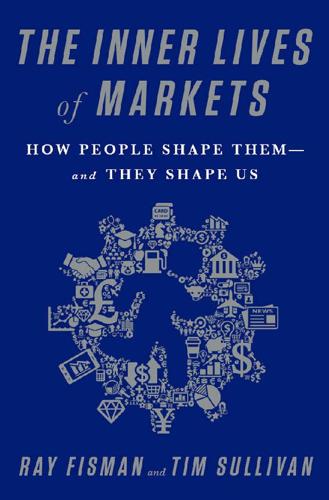
The Inner Lives of Markets: How People Shape Them—And They Shape Us
by
Tim Sullivan
Published 6 Jun 2016
The very definition of what constitutes a market has changed. New forms of transacting are popping up not just on iTunes, Google, Uber, and e-commerce sites (although algorithms driven by economic theory of recent vintage lie under the hood of these websites). Economists have also changed the way we think about—among other things—how to match medical residents to hospitals or donor kidneys to dialysis patients, how governments sell broadband spectrum, and how donations are distributed among food banks across America. Economic Theory and You We wanted to tell the story of the sometimes complicated interactions that have landed us where we are today—surrounded by market interactions that have not only replaced grocery stores like Percy P.’s but also schools like Lincoln Elementary.
…
Recent work on two-sided markets like Uber or Google that sit between customers and drivers or between web searchers and advertisers has helped to guide the strategies of companies looking to build the next killer platform. We now even have market designers who have shifted from describing markets to shaping them to a desired image in an effort to address a particular problem, whether assigning students to the right schools or matching medical residents to hospitals. This isn’t an intellectual history of economics since World War II, nor are we aiming to be comprehensive in our coverage. Instead, we hope that our selective history of recent market insights and design can get us to a place where we can better confront our complicated and often fraught relationship with markets.
…
It happened to the market for slots at sororities, too, which used to be reserved for college seniors, until popular girls started getting invitations to join at the start of their junior, then sophomore, then freshman year. (According to market design guru Al Roth, one theory holds that the term “fraternity/sorority rush,” which today describes the process by which sororities and fraternities recruit new members, comes from the frenzied competition among sororities to lock in new members.4) It’s what prompted medical residency programs to develop a centralized clearinghouse in the 1940s to fend off students receiving exploding offers before they were done with their intro to anatomy course. These allocation problems all now have centralized clearinghouses, many designed with the basic deferred acceptance algorithm as their foundations.
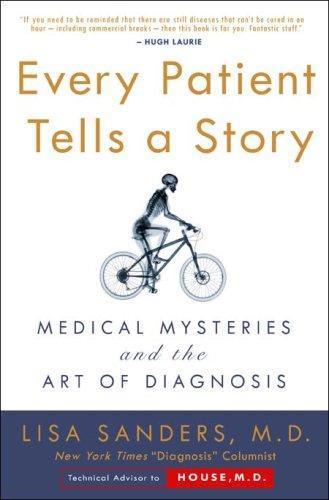
Every Patient Tells a Story
by
Lisa Sanders
Published 15 Jan 2009
The missing end of our stethoscopes rested on the upper left side of the mannequin’s chest, a couple of inches below the clavicle, demonstrating where the sound we heard would be coming from, had this plastic dummy been a living patient. The tiny class sat silent. Despite the age and years of experience of most of the doctors, there was an awkward pause as we hesitated to answer—it was a moment straight out of sixth grade. I knew from my own years of teaching medical residents that it’s often hard to tell what that silence means. Is the question too hard? Or too easy? Both provoke the same uneasy hush. I still hadn’t recognized the heart sound and suspected that was true of the others as well. “All right. Don’t tell me what you think it is—we’ll get to that. Just describe the sound.”
…
Has it done any good? It’s still too early to tell if the test has made any real difference in what doctors do, yet if my own institution is any example, then I suspect it’s having a tremendous impact on how doctors are trained—at least in medical school. Eric Holmboe now heads the department that evaluates medical residents at the American Board of Internal Medicine (ABIM), the organization that accredits doctors specializing in internal medicine. Until 2004 he was associate program director of the Primary Care Internal Medicine Residency Program at Yale. (That’s when he saw my patient Susan Sukhoo.) At a recent meeting of directors of clinical teaching from medical schools in the Northeast, Holmboe described Yale’s preparation for the clinical skills exam part of the USMLE.
…
“But there’s plenty of evidence that there were significant inadequacies in the way doctors took a history and performed a physical exam starting as early as the 1970s.” Eric wants to change all that. An energetic man in his forties with a rangy build, broad smile, and loping gait, he greeted me enthusiastically when I appeared at one of his workshops taking place in Boston. Eric is in charge of developing programs to shore up the physical exam training in medical residency programs for the American Board of Internal Medicine. One of the principal ways he does that is by teaching teachers how to teach. His focus is to convince teachers to actually watch residents as they examine their patients and then teach them how to fix what they find. “The way I was taught the physical exam was just crazy,” he told me.
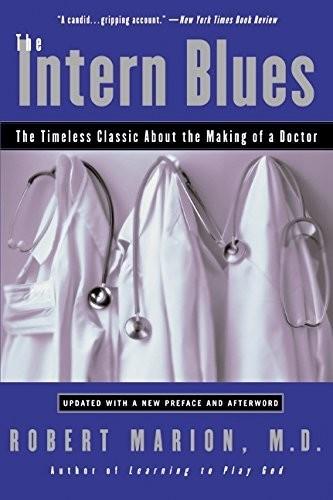
The Intern Blues: The Timeless Classic About the Making of a Doctor
by
Robert Marion
Published 1 Jan 1989
In the critical care room, the crowd was gone; there were just a couple of nurses, removing all the lines and stuff, cleaning him up, getting ready to bag him, and there he was with his glazed corneas—yeah, he looked dead, all right. The medical resident came in and we talked about it for a minute. No one had said anything to the family yet. I told him I’d gotten the history from the mother. “Well, I guess you’re the only one who’s established rapport . . .” he said. Rapport? I spoke with the woman for five lousy minutes; that’s not exactly what I’d call establishing rapport. But I was elected. Other than me, nobody had even laid eyes on the woman. The medical resident said he’d come along with me. On the way back to the social work office, I stopped myself and thought, What the hell am I going to say to this woman?
…
I should have booted him out, told him I was talking and that it was important, but I didn’t think to do that, so I didn’t get to prepare her in any way. Ah, maybe she didn’t want to know, maybe she would have been worse off had I tipped her off beforehand. Who knows? Anyway, there I was, sitting in front of her in the social work office, and the medical resident was standing behind me and there she was, looking at me, not having a clue what was going on. All I could think to say was, “I’m sorry, but I have to tell you, your son is dead.” She looked at me, her eyes bugged out, and she became completely hysterical. And the woman who was there with her also became completely hysterical.
…
In other professions, a person who wants a particular job submits an application and a résumé; the person goes on interviews, trying to convince the employer that he or she is right for the job; if the job is offered, the person has the right to accept it and begin work, or to reject it. But this system, good enough for American business, apparently is too simple for medical residency training. After all, there’s no torture involved. The search for the perfect internship begins early in the summer before the medical student’s fourth and final year of school. The student interested in pediatrics or internal medicine fills out as many as twenty applications for residency programs.
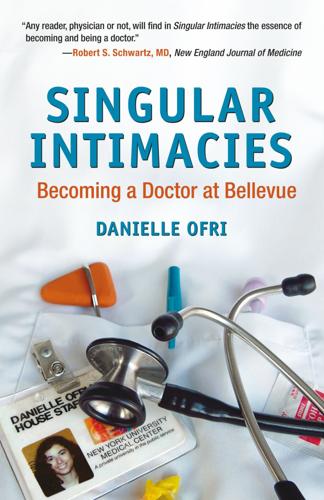
Singular Intimacies: Becoming a Doctor at Bellevue
by
Danielle Ofri
Published 31 Mar 2003
Later on I learned that if it weren’t for the FMGs, there would be almost no medical care in small community hospitals in most of America, but no one ever mentioned that. Miguel had been raised in upper-middle class Venezuela. He’d attended private Catholic schools and the most prestigious college and medical school. He’d completed an entire medical residency in South America but was now repeating it in New York in order to apply to competitive American cardiology fellowships. For him, life in the hospital was old-hat. Nothing fazed or unnerved him, which was a relief to me, for whom everything was a potential land mine. He enjoyed sharing his knowledge and never minded when the other members of the team made fun of his throaty accent.
…
There were so many levels of hierarchy in the room that I couldn’t keep track of who feared whom the most. The case summary was gripped in my right hand, a cup of coffee in my left. Only a few drops spilled onto the typed sheets as I squirmed into my seat under the weight of their stares. I wasn’t the only person who had made the error, but as medical consult—the senior medical resident—I’d been in charge. Well, since this was University Hospital, the attending was really in charge, so I guess he’d be at the top of the lawsuit. And there were all those consultants on the case, too. But it’s always the resident who gets flayed for the screwups. Residents are cheap labor for the private attendings.
…
His admission labs were within normal limits. On Thursday, endoscopy showed esophageal strictures. On Friday he underwent successful balloon dilatation of the strictures. By Saturday the patient was already able to swallow soft foods.” I was medical consult at UH that weekend. As the senior medical resident I was responsible for all the interns and residents on call. I had to handle all admissions and transfers, and of course any codes. I was irritable just having to be there—I preferred to work at Bellevue. Maybe Bellevue didn’t have as many amenities, but at least we residents got to make all the decisions about patient care.
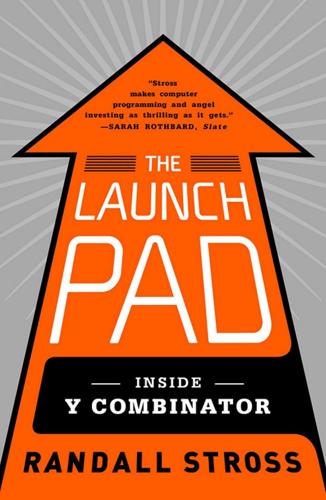
The Launch Pad: Inside Y Combinator, Silicon Valley's Most Exclusive School for Startups
by
Randall Stross
Published 4 Sep 2013
Ballinger is concerned, though, that fewer than a thousand Web sites host discussion forums whose scale is large enough to need the service. This would seem to limit the potential size of the startup. Another idea they are considering is medical resident scheduling. “Do you know how it works? OK, at the beginning of the year, the head resident puts together a schedule of all the rotations medical residents do. Each one has a specialty—” “How did you arrive at that idea?” Taggar asks. “We know a lot of doctors. Jason has been on the phone with like ten to fifteen different doctors. I heard about it ’cause my doctor friends are always complaining that this is a huge issue—” Taggar attempts to steer the conversation away from this idea and back to the first one.
…
Ballinger says one company that they spoke with said it would be willing to pay annually the equivalent of “two engineers’ salaries” for this service, because it was contemplating having two software engineers work on the spam problem full-time. “That’s pretty encouraging,” says Taggar. Ballinger and Tan are not yet ready to give up medical resident scheduling, however. “The adjacent thing is emergency room scheduling,” says Ballinger. “Happens monthly. And there are a lot more ERs than residency programs.” Taggar still is not enthusiastic. “Of the ideas we’ve talked about so far, the spam idea sounds interesting to me because it’s something you guys have a background in, it’s something that someone has told you they would pay you for.
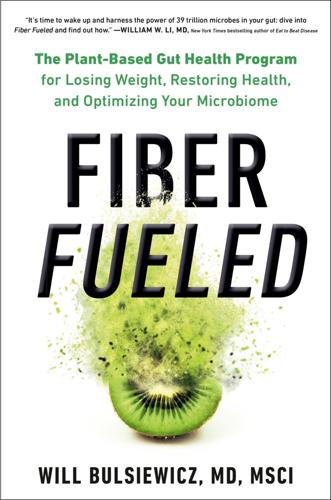
Fiber Fueled: The Plant-Based Gut Health Program for Losing Weight, Restoring Your Health, and Optimizing Your Microbiome
by
Will Bulsiewicz
Published 15 Dec 2020
As I became busier with work, took less time for exercise, and started to inch closer to age thirty, I began gaining weight, leaned heavily on coffee to get me through the day, and generally felt unwell. Things came to a head during my year as chief medical resident at Northwestern. All of my dreams were coming true professionally. Beyond being selected as the chief medical resident, which is a huge honor, I had received all the other major awards in our residency program. I was already the author of eight scientific papers in the top gastroenterology journals and my mentors, two of the most famous GI doctors in the country, Drs.
…
See also fermented foods preservatives in foods (chemical), 33, 39 primary biliary cholangitis, 16 primary sclerosing cholangitis, 16 probiotics (healthy bacteria) about, 7, 55, 141 in apples, 79–80 building momentum in, 57–58 impact of, 7 prioritization of, 145 science on, 143 supplements, 137, 141–49, 143–44, 145–46, 195 processed foods, 38, 39, 41–42, 52, 111, 123–24 prostate cancer, 22, 80, 89, 161 proteins America’s obsession with, 43–44, 50 animal proteins, 43–45, 102 plant proteins, 44, 90, 91–92 proton pump inhibitor prescriptions, 32, 37 psoriasis, 16, 109 psoriatic arthritis, 16 psyllium supplements, 139 pumpkins benefits of, 80 Pumpkin Hummus, 276–77 Pumpkin Pie for Breakfast Smoothie, 260–61 purple plants, 81 Puttanesca Tofu Scramble, 286–87 quercetin, 79 Quick Fix recipes, 209, 215 Quick Garlic Broccoli, 331–32 Quick-Pickled Beets, 230–31 rashes, 109, 110 raw vs. cooked foods, 182 recommended daily intake of fiber, 50 Red Lentil Curry Soup, 263–65 red plants, 80 red wine, 189–90 refined carbohydrates, 39, 51–52, 84, 85 reflux, 13 resistant starches, 56, 74, 78, 162, 190–91 respiratory diseases, 83 restless leg syndrome, 16 restrictive diets, xxiv, 45–47, 77, 82 resveratrol, 81, 189–90 Reynolds, Andrew, 64, 65 rheumatoid arthritis, 16, 30, 62–63, 164 rice, 56, 75 Roasted Italian Medley, 241–42 Roasted Vegetables, 296–97 romaine, 157 rye, 85, 111, 113 rye bread, 135 Saag Tofu, 272–74 SAD (Standard American Diet), 37–47, 41–42, 178 salads Buffalo Chickpea Salad, 301–2 Citrus and Mint Salad, 265–66 Daily Salad, 229–30 Down ’n’ Dirty Kale Salad, 233–35 Mediterranean Grain Salad, 291–92 No-Tuna Sunflower Salad, 267–68 Tempeh Tacos and Taco Salad, 236–38 Salmonella, 9, 57, 127 salt, 36, 39, 129, 214 sanitation, 33 sarcoidosis, 16 Sartor, Balfour, 78 satiety hormones, 51, 66, 138, 145–46, 190–91 saturated fats, 43, 46 sauerkraut, 118–19, 120, 129–30, 130–31 scleroderma, 16 seasonal allergies, 16 seaweed, 78, 167–68 second meal effect, 65–66 seeds, omega-3, 158–60, 185 sensitive gut, 95–115 serotonin, 22–23 Sesame Noodle Meal Prep Bowl, 292–94 Seventh-day Adventists, 38 sexual attraction, 21 sexual dysfunction, 22 Shaheen, Nick, xxiii sharing the message about gut healing, 96–97 short-chain fatty acids (SCFAs) about, 54–55 and animal proteins, 102 benefits of, 56, 57, 58–59 building momentum in production of, 57–58 and cancer prevention, 63–65 central importance of, 60 and cognition/brain function, 67–68 and correcting leaky gut, 59–60 and diabetes prevention, 65–66 and diversity of plants consumed, 74–75 and exercise, 197 and gluten-restricted diets, 86 and heart disease prevention, 65, 66–67 and legumes, 89–90, 91 and Paleo diet, 84 and pH of the colon, 120–21 and prebiotic supplements, 138, 140 role of, in immune system, 60–63 and sulforaphane in cruciferous vegetables, 165 and white potatoes, 78 and whole grains, 84, 91 See also butyrate shortness of breath, 13 Simple Overnight Oats, 261–62 sinus congestion, 13 Sjögren’s syndrome, 16 skin health, 13, 80, 157 sleep, 23, 195–96 smoothies Chocolate Peanut Butter Super Smoothie, 287–88 preferred over juices, 188 Pumpkin Pie for Breakfast Smoothie, 260–61 Superfood Smoothie, 225–26 snacks in Fiber Fueled 4 Weeks, 209, 214 Biome Broth, 249–50 Coconut Oat Balls, 250–51 Muhammara Dip, 248–49 Omega-3 Balls, 342–43 Plant-Powered Trail Mix, 277 Pumpkin Hummus, 276–77 Snicker Bites, 345 Speedy Edamame, 310 Turmeric Energy Bites, 310–11 White Bean Hummus, 341–42 Snicker Bites, 345 social media, 198 soil health, 120, 122 soluble fiber, 53, 56, 65, 139–40 Sonnenburg, Justin, 68, 69 sorbitol, 113 soups Biome Broth, 249–50 Nourishing Tomato Noodle Soup, 238–39 Red Lentil Curry Soup, 264–65 Supercharged Miso Soup, 322–23 Tuscan Kale Soup, 335–37 Wild Biome Super Soup, 232–33 source of fiber, importance of, 52 sourdough bread, 126, 135 soy benefits of, 88–89 choosing organic, non-GMO, 89 miso, 132–33 Miso, Mushroom, and Soba Bowl, 271–72 soybeans, 91, 125 soy milk, 89, 126 Speedy Edamame, 310 Supercharged Miso Soup, 322–23 Tempeh Tacos and Taco Salad, 236–38 See also tofu spices and herbs, 160, 211, 213 Spicy Breakfast Tacos, 288–89 spinach, 81, 157 spirulina, 168 Stewart, William, 33 stomach cancer, 81 stool, 10–11, 12, 16–17, 149 Strachan, David, 13 Strawberry Cheesecake Bites, 343–45 stress, 187, 199 strokes and apples, 79 and Fiber Fueled program, xvi role of lifestyle in, 31 and SCFAs’ protective mechanisms, 65 and sleep deprivation, 195 and sulforaphane in cruciferous vegetables, 164 and whole grains, 83 Stuffed Taco Sweet Potatoes, 269–70 sugars, 24, 36, 39, 51, 113 sulforaphane in cruciferous vegetables, 162–66 Sunday Pasta, 337–39 Supercharged Miso Soup, 322–23 Supercharged Roasted Roots, 231–32 superfoods, 151 Superfood Smoothie, with Bowl Option, 225–26 Super Seedy Breakfast Porridge, 223–24 supplements, xiv–xv, 195 sweet potatoes benefits of, 80 Berry Good Sweet Potato Toast, 226–27 Lentil–Sweet Potato Stew, 274–75 Stuffed Taco Sweet Potatoes, 269–70 Talalay, Paul, 163 tamari, 89 taste buds, 175–77 T cells, 39, 61 teas, 56 technologies, advances in, 34 telomeres, xvii tempeh, 133–34 organic, non-GMO, 89 Tempeh Tacos and Taco Salad, 236–38 testosterone (androgens), 20–21, 42 Thai Rainbow Bowls with Peanut Tofu, 297–99 thyroid health, plants that benefit, 78 time-restricted eating (TRE), 193–94 TMAO (trimethylamine N-oxide), 8, 44–46, 67, 69, 84, 104, 190 tofu, 89 Crispy Baked Tofu, 294 Curry Tofu Bok Choy, 243–45 Puttanesca Tofu Scramble, 286–87 Saag Tofu, 272–74 Thai Rainbow Bowls with Peanut Tofu, 297–99 Tofu Scramble Bowls, 259–60 tomatoes, 80, 81 Toxoplasma gondii, 5 trans fats, 43 traumatic brain injury, 68 trehalose, 41 triglycerides, 138, 197 turmeric and black pepper, 82 Turmeric Energy Bites, 310–11 Turmeric Latte, 340–41 Turnbaugh, Peter, 46, 125 Tuscan Kale Soup, 335–37 type 1 diabetes, 14, 17, 30 type 2 diabetes and apples, 79, 80 and bacterial endotoxins, 9, 42 cancer’s link to, 18 and dysbiosis in gut microbiota, 19 and fiber consumption, 65 and sulforaphane in cruciferous vegetables, 165 and whole grains, 85 types of fiber insoluble fiber, 53, 56 soluble fiber, 53, 56, 65, 139–40 ulcerative colitis, 15, 16, 30, 37, 44 vaccines, 33 vagus nerve, 22 vegetable oil, 43 vegetables anti-inflammatory properties of, 103 and Blue Zone diets, 38 See also specific vegetables Verdú, Elena, 27 vinegar, 124 viruses, 5 vitamin B12, 195 vitamin D, 195 wakame, 168 walking, 197–98 walnuts, 56 water consumption, 185–87 watermelon, 80 Watson, James, 25 weakness, 13 Week 1, 215–53 drinks, snacks, and desserts, 219–20 meal prep, 219 menu, 220–22 Quick-Fix recipes, 220 recipes, 222–53 shopping list, 215–19 Week 2, 253–79 drinks, snacks, and desserts, 255 meal prep, 256 menu, 256–58 Quick-Fix recipes, 256 recipes, 259–79 shopping list, 253–55 Week 3, 280–313 drinks, snacks, and desserts, 282–83 meal prep, 283 menu, 284–85 Quick-Fix recipes, 283 recipes, 286–313 shopping list, 280–82 Week 4, 314–45 drinks, snacks, and desserts, 316 meal prep, 317 menu, 317–19 Quick-Fix recipes, 317 recipes, 320–45 shopping list, 314–16 weight gain, 13, 19, 20, 30, 51, 195 weight loss after author’s weight gain, xxii, xxiv–xxv conventional perspectives on, 19 and exercise, 197 and fad diets, 45–47 and fermented foods, 124, 132 fiber’s promotion of, xv, 52 and fruits, 153, 154 and legumes, 88, 91 and seaweed, 167 and sulforaphane in cruciferous vegetables, 164 and whole grains, 91 wheat and agricultural practices, 75 and fructans, 113 and gluten, 85, 111 and lectins, 91 wheat allergy, 108 wheat bran, 78 wheat dextrin supplements, 139–40 whole wheat, 86, 135 wheezing, 13 Whipped Coconut Cream, 252–53 White Bean Hummus, 341–42 white-green plants, 81 Whole 30 diet, xiv whole foods, 38, 52 whole grains anti-inflammatory properties of, 84, 85, 103 benefits of, 81, 83–85, 155 and blood pressure, 91 and Blue Zone diets, 38 and cancer, 83, 91 and cardiovascular disease, 83, 91 and cholesterol, 91 and F GOALS, 155 and gluten, 85–87, 111 and inflammation, 84, 85, 91 and insulin resistance, 91 and lectins, 90 and legumes, 91–92 and life expectancy, 91 and Paleo diet, 46 and refined grains, 84 and short-chain fatty acids, 84, 91 and weight loss, 91 whole wheat, 86, 135 Wild Biome Super Soup, 232–33 worms, 5 yeasts/fungi, 4–5, 6 yellow-orange plants, 81 yogurt, 134 Zesty Lemon Chia Pudding, 251–53 Zhao, Liping, 65 ABCDEFGHIJKLMNOPQRSTUVWXYZ About the Author Will Bulsiewicz, MD, MSCI is a board-certified, award-winning gastroenterologist. He's a graduate of Georgetown University School of Medicine and was chief medical resident at Northwestern Memorial Hospital and chief gastroenterology fellow at the University of North Carolina Hospitals. He's authored more than twenty articles in the top American gastroenterology journals and has been featured in Shape, Women's Health, Men's Health, and on HuffPost. He lives in Charleston, South Carolina, with his wife and two children.
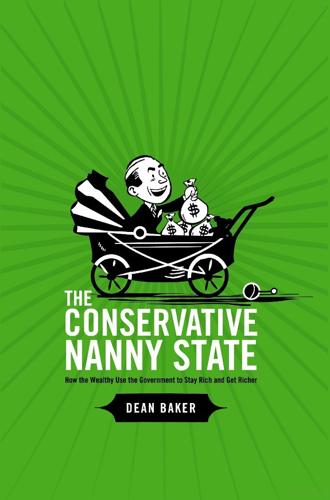
The Conservative Nanny State: How the Wealthy Use the Government to Stay Rich and Get Richer
by
Dean Baker
Published 15 Jul 2006
In fact, the exact opposite happens. In 1997 Congress tightened the licensing rules for foreign doctors entering the country because of concerns by the American Medical Association and other doctors' organizations that the inflow of foreign doctors was driving down their salaries. As a result, the number of foreign medical residents allowed to enter the country each year was cut in half. 3 For some reason, the editorial boards, political pundits, and trade economists managed to completely ignore this protectionist measure, even though its impact dwarfed the impact of most of the "free trade" trade agreements that they have promoted so vigorously.
…
physicians, see "Caught in the Middle," Washington Post, March 19, 1996, "A.M.A. and Colleges Assert There is a Surfeit of Doctors," New York Times, March 1, 1997, and "U.S. to Pay Hospitals Not to Train Doctors, Easing Glut," New York Times, February 15, 1997. The success of the 1997 policy changes in restricting the inflow of foreign doctors was noted five years later. See “Fewer Foreign Doctors Seek U.S. Training,” Washington Post, September 4, 2002, and “Test Tied to Slip in Foreign Applicants for Medical Residences,” New York Times, September 4, 2002. 19 Most people probably do not realize that the protectionist barriers that keep out foreign professionals are actually quite extensive.4 This is in part due to efforts by proponents of the conservative nanny state to conceal the protectionist barriers that benefit professionals like themselves.
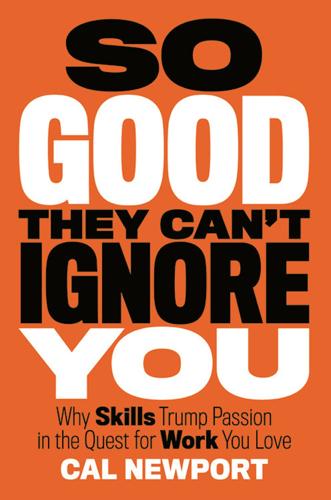
So Good They Can't Ignore You: Why Skills Trump Passion in the Quest for Work You Love
by
Cal Newport
Published 17 Sep 2012
It’s no wonder, then, that when you flip through your mental Rolodex of dream jobs, control is often at the core of their appeal. Throughout Rule #3, for example, you’ll meet people in a variety of different fields who wielded control to create a working life they love. Among them is a freelance computer programmer who skips work to enjoy sunny days, a medical resident who took a two-year leave from his elite residency program to start a company, and a famous entrepreneur who gave away his millions and sold his possessions to embrace an unencumbered, globe-trotting existence. These examples all have great lives, and as you’ll learn, they all used control to create them.
…
The more I met people who successfully deployed control in their career, the more I heard similar tales of resistance from their employers, friends, and families. Another example is someone I’ll call Lewis, who is a resident in a well-known combined plastic surgery program, which is arguably the most competitive medical residency. Three years into his residency, he was starting to chafe under hospital bureaucracy. When I met him for coffee, he gave me a vivid example of the frustrations of life as a modern doctor. “I once received this patient in the ER who had his chest cut open because he had been stabbed in the heart,” he told me.
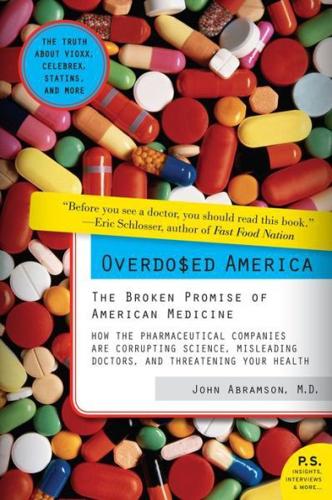
Overdosed America: The Broken Promise of American Medicine
by
John Abramson
Published 20 Sep 2004
Volpp, “Cost and Quality of Industry-Sponsored Meals for Medical Residents,” Journal of the American Medical Association 290:1150–1151, 2003. 122 Alan Holmer, claims that the drug industry: A. F. Holmer, “Industry Strongly Supports Continuing Medical Education,” Journal of the American Medical Association 285:2012–2014, 2001. 123 review article published in JAMA: A. Wazna, op. cit. 123 gifts and meals start in medical school: “Drug-Company Influence on Medical Education in U.S.A. (Editorial),” The Lancet 356:781, 2000. 123 Eight out of 10 medical residents: M. A. Steinman, M. G. Shilpak, and S. J. McPhee.
…
It doesn’t take long before doctors and drug reps are on a first-name basis. A 2001 study published in the American Journal of Medicine looked at residents’ interactions with drug salespeople and their opinions about accepting gifts and attending drug company–sponsored educational activities. Eight out of 10 medical residents saw the inclusion of such sponsored education and interaction with drug reps as “appropriate.” This shows how seamlessly drug company infomercials have become integrated into medical training, even in the very best medical centers, just as soft drink and snack machines gradually have become accepted as a normal part of the public school environment.
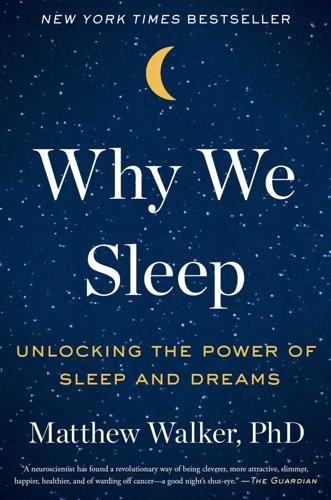
Why We Sleep: Unlocking the Power of Sleep and Dreams
by
Matthew Walker
Published 2 Oct 2017
This is because the revised rule (at the time of writing this book) has only been applied to those in their first year of training, and not to those in later years of a medical residency. Why? Because the Accreditation Council for Graduate Medical Education—the elite board of high-powered physicians that dictates the American residency training structure—stated that data proving the dangers of insufficient sleep had only been gathered in residents in their first year of the program. As a result, they felt there was no evidence to justify a change for residents in years two to five—as if getting past the twelve-month point in a medical residency program magically confers immunity against the biological and psychological effects of sleep deprivation—effects that these same individuals had previously been so provably vulnerable to just months before.
…
Residents working a thirty-hour-straight shift will commit 36 percent more serious medical errors, such as prescribing the wrong dose of a drug or leaving a surgical implement inside of a patient, compared with those working sixteen hours or less. Additionally, after a thirty-hour shift without sleep, residents make a whopping 460 percent more diagnostic mistakes in the intensive care unit than when well rested after enough sleep. Throughout the course of their residency, one in five medical residents will make a sleepless-related medical error that causes significant, liable harm to a patient. One in twenty residents will kill a patient due to a lack of sleep. Since there are over 100,000 residents currently in training in US medical programs, this means that many hundreds of people—sons, daughters, husbands, wives, grandparents, brothers, sisters—are needlessly losing their lives every year because residents are not allowed to get the sleep they need.
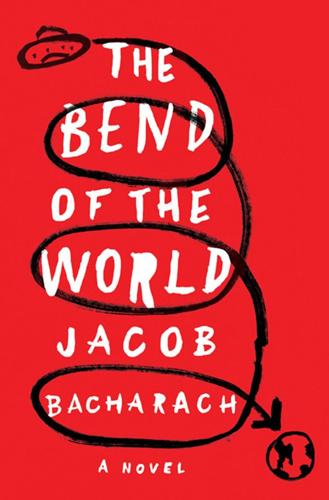
The Bend of the World: A Novel
by
Jacob Bacharach
Published 13 Apr 2014
I lived on the third floor of a converted Victorian near Friendship Avenue. The rest of the poor house, like all the other defiled old houses on my street, had long since given up its grace to cheap drywall and particleboard kitchens. An endless stream of undergraduates and itinerant hipsters and drag queens and the occasional medical residents, lured by the online promise of unbelievable (really, unbelievable) rent and a few photographs of the admittedly charming exterior as well as the wide blond floorboards and arched dormer windows that were, in fact, in my apartment alone and in no way representative of any of the others, signed leases sight unseen, arrived, and swiftly departed, paying the neat penalty of three months’ rent (security deposit, first and last month) to get the fuck out of those shitholes.
…
I pulled out my phone and entered the listing number from the sign on the real estate company’s website. It occurred to me that I had, or I would soon have, enough money to buy the place. Six units, I thought. You could turn that into income. The Mexicans could do the whole thing for twenty, thirty K. And not a shitty job. But still, a reasonable price point. Mid-level. Appropriate for a medical resident or an arts admin or something. An actual and essential function for the world I’d made. 26 After lunch, I met Julian at his other gym in East Liberty and we played racquetball for an hour. I’d considered canceling; it seemed absurd to play before going to a funeral; but then, phone in hand, finger about to tap Julian’s number, I thought, Well, what the fuck, it would be even weirder to cancel because of a funeral, as if a dead woman could be insulted that your attention was elsewhere and otherwise, as if an as-yet-unascended soul could be fooled by the artifice of grieving in excess of the grief one actually felt, as if, having already spent the morning in a jail and contemplating a future livelihood bought with my blood money bribe, it would be anything less than entirely absurd to sit in my apartment trying to be, of all things, appropriate.
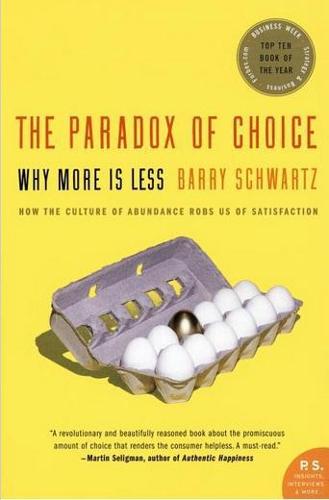
The Paradox of Choice: Why More Is Less
by
Barry Schwartz
Published 1 Jan 2004
More recent evidence has shown that positive emotion has the opposite effect—when we are in a good mood, we think better. We consider more possibilities; we’re open to considerations that would otherwise not occur to us; we see subtle connections between pieces of information that we might otherwise miss. Something as trivial as a little gift of candy to medical residents improves the speed and accuracy of their diagnoses. In general, positive emotion enables us to broaden our understanding of what confronts us. This creates something of a paradox. We seem to do our best thinking when we’re feeling good. Complex decisions, involving multiple options with multiple features (like “Which job should I take?”)
…
And happiness isn’t just about feeling good. Despite our romantic images of suffering geniuses who have enriched our civilization, creative by day and tormented by night, there is a growing body of evidence that people think more creatively and expansively when they’re happy than when they’re not. Giving medical residents a little bag of candy unexpectedly before they engage in a difficult differential diagnosis task improves both the speed and the accuracy of their diagnoses (you may want to keep this in mind the next time you visit your doctor). Happy people are more energetic and physically healthier than those who are not.
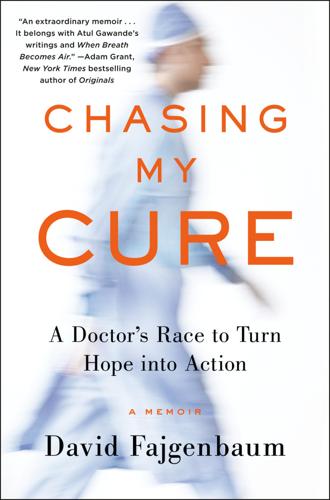
Chasing My Cure: A Doctor's Race to Turn Hope Into Action; A Memoir
by
David Fajgenbaum
Published 9 Sep 2019
I rarely scheduled anything more than three weeks in the future, the interval between my siltuximab infusions. But I was able to complete my final few rotations in time to walk in medical school graduation in May 2013. That was such a happy occasion, and my family—including Caitlin’s parents and brother—gathered to celebrate. I’d worked a long, long time to earn the right to my next step: medical residency. But suddenly something else held more appeal. At this point, I had identified the key unanswered questions in the iMCD field, crowdsourced the key studies to answer these questions, and begun to build the infrastructure to advance these research studies, but there was a lot of work still to do and a lot of refinement that could help speed things along.
…
What if my way of thinking was wrong? After all the research, publications, debates with experts, diagrams, and decision trees, there’s no answer key at the end. Ultimately, it was on no one’s shoulders but my own. And my life depended on being right. It would have helped if I had continued my training in a medical residency or was actually practicing as a physician. My limited experiences taking care of patients as a medical student left me severely ill-equipped for these kinds of decisions. In a word, I was scared. But I understood that you can choose which fear you’ll face. When I was still a participant in the Santa Claus theory of civilization, I was just a little kid waiting for a miracle.
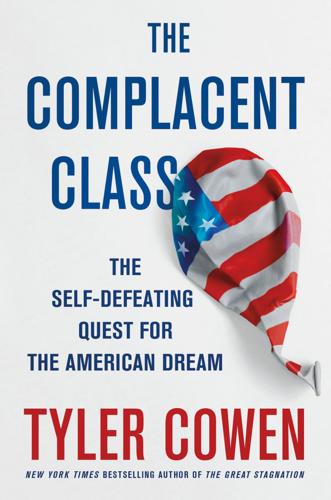
The Complacent Class: The Self-Defeating Quest for the American Dream
by
Tyler Cowen
Published 27 Feb 2017
Alvin Roth, an experimental economist now at Stanford University, won a Nobel Prize in part for using economic theory to come up with better algorithms for matching, and these methods are supposed to be robust across many realms in a quite general sense. His Nobel Prize was an especially deserved one, as it reflects the spirit of our times more than was recognized in 2012, the year he won. Some of Roth’s work focused on the allocation of doctors to medical residencies, which is fundamentally a problem of matching. At some point in the process of becoming a full-fledged doctor, candidates apply for resident appointments, but there are many candidates and many available places for service, and not everyone can get his or her top choice of venue or doctor. Given this complexity, what is the most efficient way to decide which candidates should be paired with which slots?
…
His algorithm then uses this information to make the best possible allocation of doctors across residencies. Roth’s matching algorithm now governs the national system of slot allocation. It’s better for doctors and hospitals, and probably better for patients too, because happier doctors probably means higher-quality performance. Roth’s algorithms for matching are not just for medical residencies. Many colleges and universities, when they receive a new class of freshmen and must allocate them to dorms and roommates, draw on Roth’s ideas to elicit preference rankings and then use mathematics to perform the optimal pairings. Again, not everyone can get his or her first choice, but the better matching makes as many students as happy as possible.
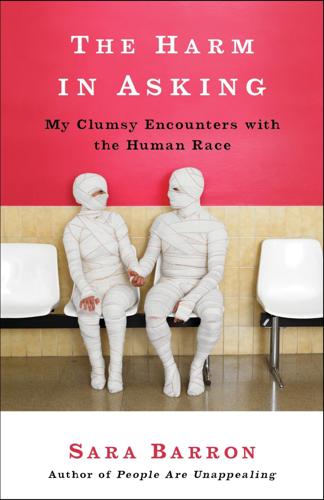
The Harm in Asking: My Clumsy Encounters With the Human Race
by
Sara Barron
Published 25 Mar 2014
He had hair that looked plucked from a Ken doll, and his shoulders were so, like, erotically broad I’d have licked my way across them if given the chance. Dr. Dean was the director of the hospital’s orthopedics department, and this meant that wherever he went—whenever he went there—a gaggle of medical residents trailed along behind. These medical residents were also very handsome. I hadn’t known I had a thing for doctors, but now I realized this was only because I’d never seen a slew of handsome ones together. The cumulative effect suggested I’d died and gone to Vegas heaven, to a place where the showgirls were not showgirls at all, but rather Harvard-educated, scrubs-clad show-boys.
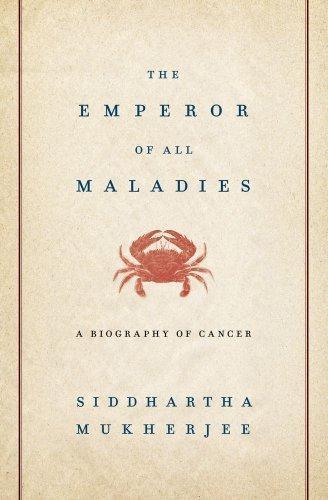
The Emperor of All Maladies: A Biography of Cancer
by
Siddhartha Mukherjee
Published 16 Nov 2010
The combined effect is that of a boat with mast but no sail, helplessly drifting alone in a rough, uncharted sea.” Every evening, Farber came to the wards, forcefully driving his own sail-less boat through this rough and uncharted sea. He paused at each bed, taking notes and discussing the case, often barking out characteristically brusque instructions. A retinue followed him: medical residents, nurses, social workers, psychiatrists, nutritionists, and pharmacists. Cancer, he insisted, was a total disease—an illness that gripped patients not just physically, but psychically, socially, and emotionally. Only a multipronged, multidisciplinary attack would stand any chance of battling this disease.
…
Tom [Frei] and Zubrod and the rest of them—we were all experimenters. To not experiment would mean to follow the old rules—to do absolutely nothing. Li wasn’t prepared to sit back and watch and do nothing. So he was fired for acting on his convictions, for doing something.” Freireich and Li had been medical residents together in Chicago. At the NCI, they had developed a kinship as two outcasts. When Freireich heard about Li’s dismissal, he immediately went over to Li’s house to console him, but Li was inconsolable. In a few months, he huffed off to New York, bound back for Memorial Sloan-Kettering. He never returned to the NCI.
…
“We knew where Rb lived,” Weinberg recalled, “but we had no idea what Rb was.” Across the Charles River from Weinberg’s lab, Thad Dryja, an ophthalmologist-turned-geneticist, had also joined the hunt for Rb. Dryja’s laboratory was perched on the sixth floor of the Massachusetts Eye and Ear Infirmary—the Eyeball, as it was known colloquially among the medical residents. The ophthalmological infirmary was well-known for its clinical research on eye diseases, but was barely recognized for laboratory-based research. Weinberg’s Whitehead Institute boasted the power of the latest technologies, an army of machines that could sequence thousands of DNA samples and powerful fluorescent microscopes that could look down into the very heart of the cell.
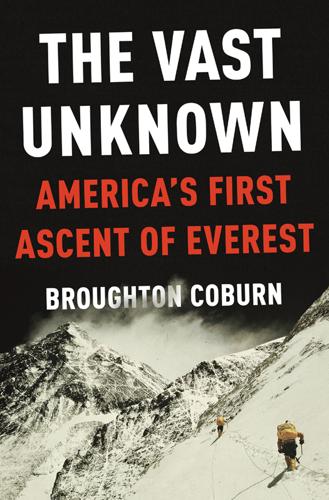
The Vast Unknown: America's First Ascent of Everest
by
Broughton Coburn
Published 29 Apr 2013
Early that year Dingman had been drafted for service in Vietnam—an inconvenient development falling right in middle of his medical residency. Just before being shipped out, he received a mysterious phone call. “Dr. Dingman … Would you like to work for the government on a special project?” “Well, I’ve already been drafted,” he responded with wry resignation. “We can fix that,” said the caller, who claimed to be with the CIA. Dingman’s curiosity was piqued, and he returned to Baltimore for a meeting. He said that he’d consider the Nanda Devi mission, but only if the CIA interceded with the draft board and allowed him to complete his final year of medical residency. The agency agreed. Early in the summer of 1966, Langley phoned back, saying that they needed him in India right away.
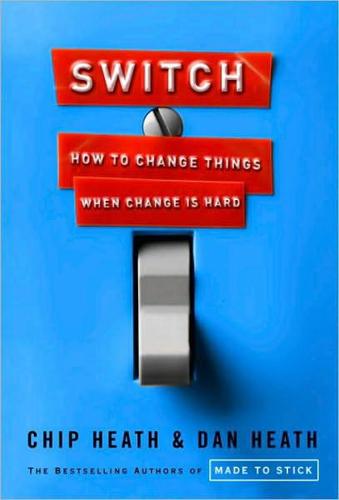
Switch: How to Change Things When Change Is Hard
by
Chip Heath
and
Dan Heath
Published 10 Feb 2010
In 1984, Libby Zion, an 18-year-old freshman at Bennington College, at home visiting her parents in Manhattan, died in a New York teaching hospital. She’d been given the wrong medication by a medical resident who’d been working for over 19 hours. Her death sparked an outcry over the excessive hours worked by medical interns. (Interns are first-year residents. They’ve completed three years of medical school and are beginning full-time work in hospitals.) Traditionally, interns have worked an astonishing 120 hours per week. The story of Libby Zion became the centerpiece of a campaign to limit the workweeks of medical residents. Almost two decades later, in 2003, Congress finally seemed ready to move. Then the American Council for Graduate Medical Education—which accredits medical schools—made an effort to preempt congressional legislation by requiring 80-hour workweeks for residents starting in July 2003.
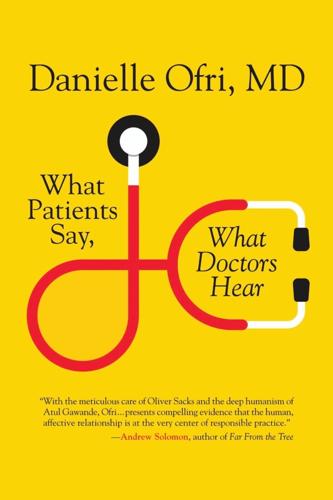
What Patients Say, What Doctors Hear
by
Danielle Ofri
Published 1 Feb 2017
But outside of research, placebo has been viewed with suspicion. Using placebos in actual clinical medicine is considered shady, if not downright unethical. But communication plays an enormous role in placebo and the eschewal of using placebo in treatment is starting to ease. I had occasion to employ a placebo one night during my second year of medical residency, though even to this day I’m not sure whether I did the right thing. It was well past midnight on the AIDS ward at Bellevue Hospital in New York City, at a time when this ward was overflowing with patients. Despite the late hour, the nurses and doctors were still rushing about at full speed, as the admissions continued to surge in, each more feverish and emaciated than the previous.
…
Every doctor would say that this is the ethically correct course of action. But I know from brutal experience that this is far from easy. It was during a long night on call—we were probably up to our eighth or ninth admission that day, but my intern and I had long since given up counting. I was midway through my medical residency at Bellevue and was already a seasoned survivalist; you had to be, otherwise you’d drown in the overwhelming pummel of admissions that streamed in from the ER, day and night. This admission was a classic eye-roller: a nursing home patient with dementia, sent to our hospital for altered mental status.
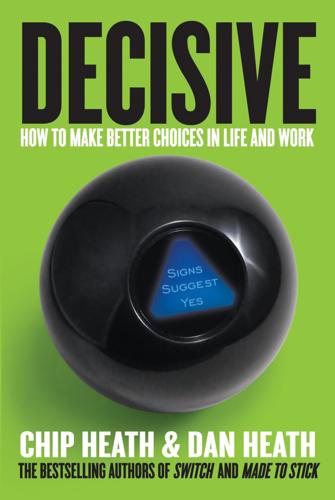
Decisive: How to Make Better Choices in Life and Work
by
Chip Heath
and
Dan Heath
Published 26 Mar 2013
The presence of the families had caused problems, though. Sometimes the surgeons would bring their kids into the operating room, an intrusion that would never be permitted in the United States, or else they’d leave their kids in the waiting areas to be babysat by local medical personnel. Another seemingly small issue was whether medical residents should be allowed to join the trips. A longtime board member and volunteer, Dr. Richard Jobe, said, “It’s a tremendously valuable experience for young surgeons, pediatricians, and anesthesiologists to go and experience this.” But the presence of the residents sometimes caused problems at the local sites.
…
” • • • ONCE THE LEADERS OF Interplast realized that the patient, rather than the surgeon, was their top priority, they did something important: They enshrined that priority, making it known to everyone in the organization, so that it could influence dozens or even hundreds of future decisions. It helped employees navigate decisions between two good options. (Is allowing medical residents on trips best for the patient? No, because they distract the visiting physicians from training time with local doctors, who will be there all the time for new patients.) Of course, this navigational role is supposed to be the whole point of organizational mission statements and values. Unfortunately, the top executives of most organizations have chosen to retreat behind vague endorsements of values like “diversity,” “trust,” “integrity,” and so on (thus taking a bold stand against the haters of integrity!).
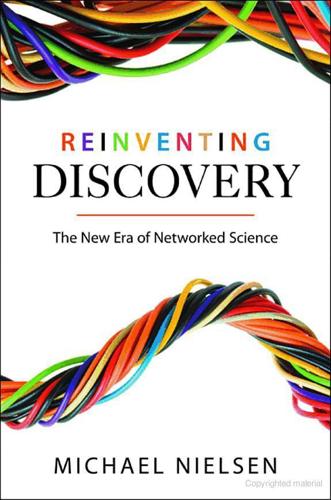
Reinventing Discovery: The New Era of Networked Science
by
Michael Nielsen
Published 2 Oct 2011
In 1996 another follow-up experiment was done, this time in a teaching hospital, asking groups to make medical diagnoses on the basis of video clips of patient interviews. Again, the information was partial: each person in the group saw only part of the video interview. The groups making the decisions included three people of different statuses a medical resident, an intern, and a student. Alarmingly, but perhaps not surprisingly, the groups paid much more attention to unique information held by the high-status medical resident. Unique information held by the interns and students was much more likely to be ignored. These and many other studies paint a bleak picture for collective intelligence. They show that groups often don’t do a good job of taking advantage of their collective knowledge.
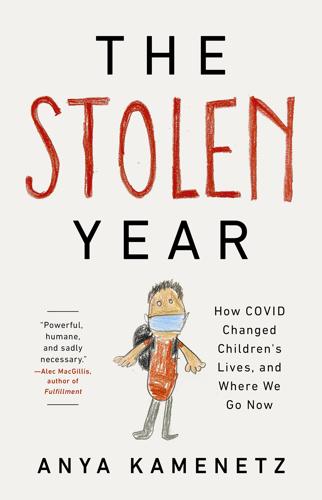
The Stolen Year
by
Anya Kamenetz
Published 23 Aug 2022
“They really described the loss of their typical support network and a lot of challenges around the breakdown of routines,” says clinical psychologist Leslie Roos at the University of Manitoba, who has her own small children. “Relatives, other moms, going to the playground. All of that went away.” Maya, in San Francisco, experienced bouts of volatility, crying often. Dara, in New York, took Ambien in the early days to help her turn off her brain and sleep, harking back to her days as a medical resident. Heather, in St. Louis, smoked marijuana and turned to her positive affirmations. Jeannie, in Oklahoma, had struggled with anxiety and depression for years. She went on and off different psychiatric medications during this time, put on weight, and experienced suicidal thoughts. “It’s easy to say I need help, but I don’t know where to go,” she told me.
…
And then about a week and a half ago now, he put a cord around his neck until he turned purple and I had to take it off of him.” Maya was on a call with the hospital managing her sick mother’s care at the time. She brought Jonah in for observation. She was very worried. It took months to get him treatment. A RUNAWAY COMES TO NEW YORK CITY I spoke to a medical resident doing an adolescent psychiatric rotation in the emergency room of a private hospital on the Upper East Side of New York. One story he told illustrates the compounding effects of the pandemic: There was this kid who ran away from home, from Baltimore. When I took her history, she said that ever since COVID hit, her parents are working from home.
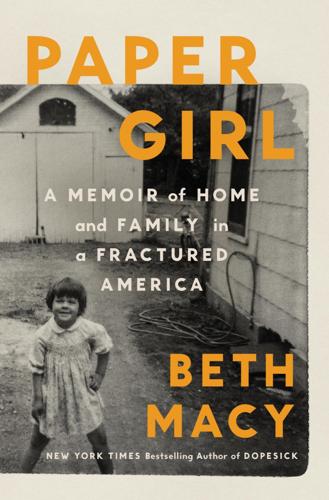
Paper Girl: A Memoir of Home and Family in a Fractured America
by
Beth Macy
Published 6 Oct 2025
Though Church is three decades younger than me, we share parallel Hillclimber stories, down to our Most Improved softball trophies and fond memories of playing trumpet in the UHS Marching Band. “I love David M. Sapp!” Church enthused, when I mentioned his name. When Church returned to Urbana after her medical residency two years ago, a local cardiologist sent her a fruit basket with the note “We’re so proud you came back.” Talk about exceptional: Few UHS kids go on to become doctors, and almost none of those return home to practice. When a med-school professor expressed shock that Dr. Rachel Townsley Church would return to Urbana to practice, she said, “Why?
…
Sometimes I feel like I’m the one person in their week who sits and listens to them. The loneliness, it’s huge.”[6] She and her husband had recently joined a progressive church in Springfield that offers English Language Learners classes for Haitians and heartily supports the LGBTQ members of its congregation. During her medical residency, Church did a U-turn on her long-held conservative beliefs about gay people, after befriending several fellow residents who were queer. Asked if she delivered gender-affirming hormone care at the clinic, she whispered, “Yes.” “Suicide rates among trans people are out of control, and we know that gender-affirming care helps prevent that.”
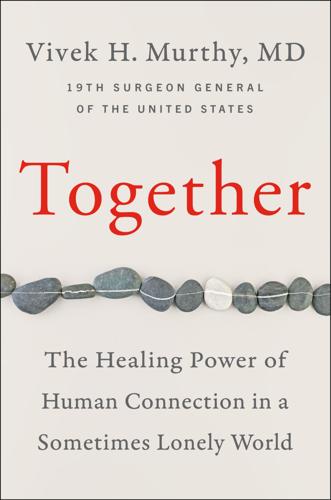
Together
by
Vivek H. Murthy, M.D.
Published 5 Mar 2020
My pockets were overflowing with tools, including a stethoscope, ophthalmoscope, tuning fork, reflex hammer, Pocket Medicine handbook, three black ballpoint pens, blank index cards for recording patient details, a list of phone numbers for key hospital services, and laminated cards filled with algorithms for everything from cardiac resuscitation to the treatment of diabetic ketoacidosis. Yet none of those cards and manuals mentioned the most common ailment I was about to encounter among my patients. In the days ahead, as I went on bedside rounds with my team of medical residents and senior physicians, I focused my attention on getting the right diagnosis and prescribing the right medications, treatments, and tests. It was overwhelming at times, but as the months wore on, I got more and more comfortable managing common illnesses like diabetes and cancer and unusual ones that I had only read about in textbooks.
…
Yet despite all the innovation, technology, and resources that promise to make modern life easier, I found myself thinking I’d rather have the strong community that this man was describing. Family close by and neighbors who were like family. I’d take the traditional solution over the modern-world solution of community-for-hire any day. This encounter reminded me fondly of another Ethiopian family I’d met during my first year as a medical resident. I received a page one Saturday afternoon to evaluate a patient with advanced liver failure due to hepatitis C, acquired through a blood transfusion many years earlier. Checking her chart on my way to the hospital’s main patient tower, I read that Mrs. Bekele was in the final stages of her illness.

Deep Medicine: How Artificial Intelligence Can Make Healthcare Human Again
by
Eric Topol
Published 1 Jan 2019
A man who had been perfectly healthy for ninety years all of a sudden was in a coma with a rotted liver. He was receiving no intravenous or nutritional support, but he was receiving lactulose enemas to reduce his blood ammonia level from the liver failure. His prognosis for any meaningful recovery was nil, and the attending doctor and the medical residents suggested that we make him a do-not-resuscitate order. Arrangements were made over the next few days for him to come to our house with hospice support, so he could die at home. Late on a Sunday night, the night before we were to take my father-in-law home to die, my wife and daughter went to visit him.
…
Zak Kelm and his colleagues undertook a major analysis of sixty-four studies, ten of which they considered to be rigorously designed; in general, the studies showed that empathy can be cultivated among physicians.24 Unfortunately, empathy scores decline during medical training, as empathy is challenged by the practice environment. As David Scales, a medical resident, noted, practitioners lack the time to care for patients as the doctors hope and patients deserve, with physicians blaming “the time pressure created by a billing system that promotes quantity of patients seen over quality, the lack of control over the chaotic work environment, and endless time spent on administrative tasks.”25 We also know that medical professionals generally have low scores on empathy quotient (EQ) tests.
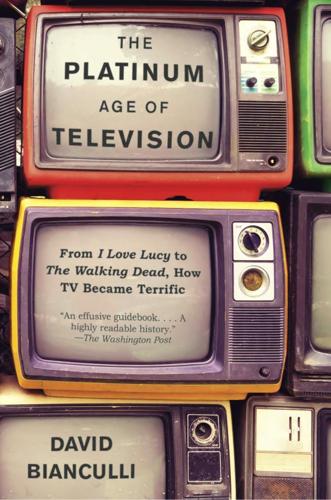
The Platinum Age of Television: From I Love Lucy to the Walking Dead, How TV Became Terrific
by
David Bianculli
Published 15 Nov 2016
Law, “was just never underestimate the intelligence of the audience. There are a lot of studio and network executives that will preach just the opposite.” In 1989, Bochco invited Kelley to co-create, and collaborate on, another series, ABC’s Doogie Howser, M.D. comedy-drama, starring a teenage Neil Patrick Harris as a young prodigy medical resident. When I interviewed Bochco, I mentioned I planned to classify Doogie, in my history of quality TV, under the medical show genre, but he disagreed with me, saying he considered it first and foremost a family drama. And he should know, so I reclassified it. “The medical aspects of it was the sort of organizing element of it, no question,” Bochco allows.
…
Not only did one doctor become a serial rapist, but another, Morse’s Dr. Morrison, was a rape victim himself, taken hostage and brutalized while tending to male patients at a local prison. (Fontana’s dry run, perhaps, for the brutality of Oz.) Regular characters died suddenly, committed suicide, became clinically depressed, lost their medical residencies, or suffered razor slashes to the face. One doctor, Mark Harmon’s Bobby Caldwell, became the first prominent TV character to contract AIDS, and that wasn’t the first time St. Elsewhere had explored that particular subject matter. A story line in 1983, involving a secretly gay politician who tested positive for HIV, was the first mention and depiction of the AIDS virus on prime-time dramatic television.
…
— The next batch of prominent medical shows were genre benders, dealing with medicine in more unorthodox settings or styles than the straightforward medical series. ABC’s China Beach (1988–91), set near the front lines during the Vietnam War, was, like CBS’s M*A*S*H, as much a war series as a medical one and is discussed there instead. ABC’s Doogie Howser, M.D. (1989–93), starring Neil Patrick Harris as a teenage medical resident, is split between scenes at the hospital and scenes at home, but the creator Steven Bochco says he considers the show, first and foremost, a family comedy-drama. CBS’s Northern Exposure (1990–95), from the early St. Elsewhere producers Joshua Brand and John Falsey, was about a New York doctor repaying his massive student loan debt by tending to the citizens of a small town in Alaska but was much more about the townspeople than the medicine.
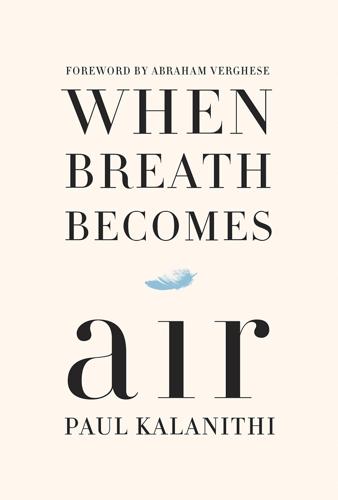
When Breath Becomes Air
by
Paul Kalanithi
and
Abraham Verghese
Published 12 Jan 2016
I began uncontrollably vomiting green bile, its chalky taste distinct from stomach acid. This was from deep in my gut. I would not be going to graduation, after all. I needed IV fluids to avoid dehydration, so Lucy drove me to the emergency department and rehydration began. The vomiting gave way to diarrhea. The medical resident, Brad, and I chatted amicably, and I relayed my medical history, covering all my medications, and we ended up discussing advances in molecular therapies, especially Tarceva, which I was still taking. The medical plan was simple: keep me hydrated with intravenous fluids until I could drink enough by mouth.
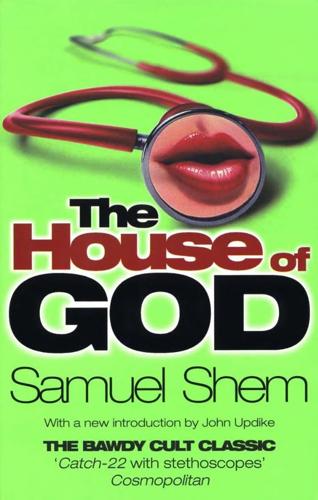
House of God
by
Samuel Shem
Published 1 Jan 1978
You see, the world is so finely balanced that small actions can have tremendous effects—one person can make a difference. Our ten-year-old did, and is continuing to do so. To all, my gratitude. Samuel Shem, M.D., Ph.D. October 15, I. FRANCE Life's like a penis: When it's soft you can't beat it; When it's hard you get screwed. —The Fat Man, Medical Resident in the House of God 1 Except for her sunglasses, Berry is naked. Even now, on vacation in France with my internship year barely warm in its grave, I can't see her bodily imperfections. I love her breasts, the way they change when she lies flat, on her stomach, on her back, and then when she stands, and walks.
…
I went through my last Clinic taking deep breaths to keep back the tears. Mae, my black Witness, concerned about my puffing, asked, "Oh Doctuh Bass, you ain't done caught my asthma from me, has you?" When I'd told people I was thinking of going into psychiatry, many were surprised. … NOT GOING ON IN YOUR MEDICAL RESIDENCY?! YOU PROMISED THEM! HOW WILL IT LOOK ON YOUR RECORD? RECONSIDER! I AM AMAZED!… My father. For the first time, he'd been nudged out of his conjunctions. But then, calming himself again, he embraced his grammar, he embraced his son, and went on: … I can't understand your taking a year off and it is a waste of a potential year's income.
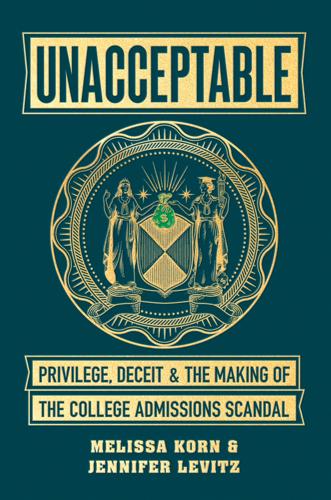
Unacceptable: Privilege, Deceit & the Making of the College Admissions Scandal
by
Melissa Korn
and
Jennifer Levitz
Published 20 Jul 2020
After graduating from Harvard and then Columbia Law School, Rosen worked as an assistant district attorney in Manhattan and then clerked for a federal judge in the Southern District of New York before jumping to the private firm of Richards Kibbe & Orbe, where he became a point person on complex securities cases. When his wife landed a medical residency spot in Pittsburgh, he could’ve stayed in lucrative private practice. But government service had an allure, and he became a federal prosecutor there, focused on drug cases, navigating gritty distributors, informants, and wiretaps. His peers saw him as notably tenacious with an unusual ability to laugh at himself.
…
Hooper believed the couple had been under the impression that going to the West Hollywood test site was beneficial for students who needed special testing arrangements, such as extra time. He said their son had for years received such allowances for a legitimate medical issue. The couple traveled with the teen and even turned the visit into a fun family weekend, visiting Gregory Colburn’s old stomping grounds of West Hollywood, where he lived while doing his medical residency at UCLA, Hooper said. The teen brought his pencils and packed his lunch like his peers. But according to Hooper, the couple had no idea that Singer’s corrupt proctor would be there, or that he would take the test from their son at the end and fix his answers. The Colburns, Hooper said, “thought it was all legit
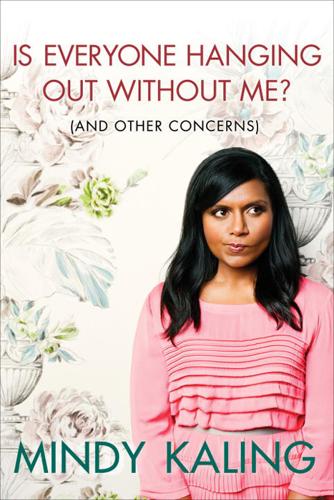
Is Everyone Hanging Out Without Me? (And Other Concerns)
by
Mindy Kaling
Published 1 Nov 2011
No one is going to say, “Wow, Mindy, you really have it especially bad. I have heard some stories of stress, but this just takes the cake.” This is entirely because my parents are immigrant professionals, and talking about one’s stress level was just totally outlandish to them. When I was three years old my mom was in the middle of her medical residency in Boston. She had been a practicing obstetrician and gynecologist in Nigeria, but in the United States she was required to do her residency all over again. She’d get up at 4:00 a.m. and prepare breakfast, lunch, and dinner for my brother and me, because she knew she wouldn’t be home in time to have dinner with us.
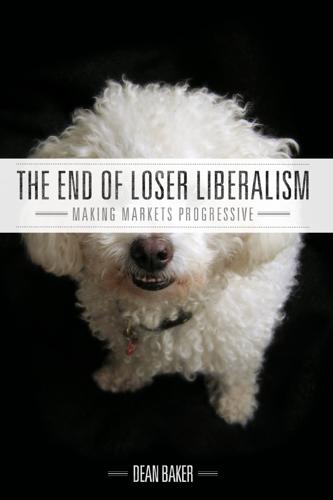
The End of Loser Liberalism: Making Markets Progressive
by
Dean Baker
Published 1 Jan 2011
They are the people who shape the debate over policy issues like trade. And they use their control over this debate to prevent the notion of increased international competition in professional services from entering public debate. In the mid-1990s there was a debate over efforts to tighten restrictions on the number of foreign medical residents entering the United States. The two sides in the debate were the physicians’ organizations, who contended that foreign-born doctors were driving down the wages of doctors born in the United States, and community health groups, who argued that foreign-born doctors were serving underserved areas like rural areas, places where native-born doctors did not want to practice.[75] Remarkably, no one was cited in this debate who gave the standard economists’ argument that increasing the number of qualified foreign-born doctors in the country would drive down the wages of native-born doctors.
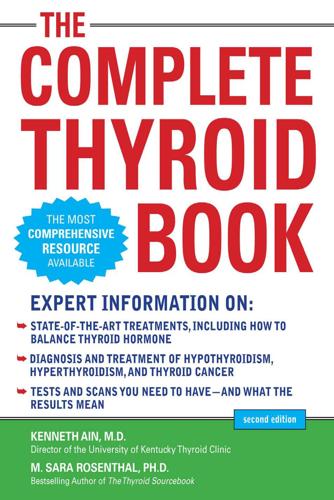
The Complete Thyroid Book
by
Kenneth Ain
and
M. Sara Rosenthal
Published 1 Mar 2005
As a new intern, my first intensive care patient was a comatose gentleman whose illness had defied understanding for three weeks. What a triumph for a new physician to diagnose myxedema (hypothyroid) coma and see my patient awaken after sufficient treatment with thyroid hormone! My interest in thyroid disease persisted and grew through medical residency and then blossomed under the mentorship of Dr. Samuel Refetoff at the University of Chicago during three years of an endocrinology fellowship. It progressed further during my time as a senior staff fellow working with Dr. Jacob Robbins at the National Institutes of Health, where I began to specialize in treating patients with thyroid cancer and continued my basic and clinical research on thyroid diseases.
…
The chapter will start with an overview of the thyroid hormone resistance syndrome and then touch upon four additional areas: pituitary or hypothalamic genetic disorders, genetic abnormalities in thyroid gland development, genetic defects in the production of thyroid hormone, and inherited abnormalities in thyroid hormone binding proteins in the blood. 241 P EOP LE I N SP ECIAL CI RCUMSTANCES Resistance to Thyroid Hormone (RTH) or Thyroid Hormone Resistance The story of resistance to thyroid hormone (RTH) started forty years ago with my (Ken) mentor, Dr. Samuel Refetoff. As an astute medical resident in a Los Angeles emergency room, he examined a six-year-old girl after she’d been in an automobile accident. This child had a goiter, bones that appeared to be those of a younger child (on x-ray exam), and was a deaf-mute. Such findings would typically make a physician suspect the child to have had severe hypothyroidism since birth; however, Dr.
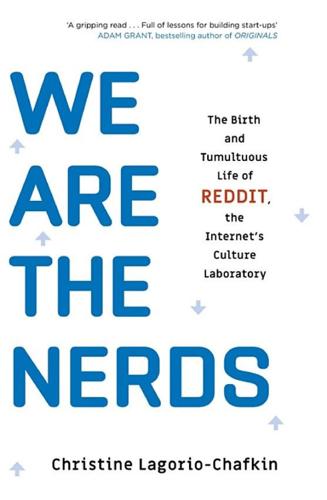
We Are the Nerds: The Birth and Tumultuous Life of Reddit, the Internet's Culture Laboratory
by
Christine Lagorio-Chafkin
Published 1 Oct 2018
Huffman had become a minor legend for having created Reddit, and he could easily have raised funding from a venture capital firm for any idea he’d wanted. Instead, he partnered with a virtually unknown twenty-two-year-old, on an idea whose premise he’d deemed unsound. Over the following weeks they made plans. They’d move together to wherever Katie Huffman’s medical residency required that Huffman relocate after her graduation. They’d live together, and they’d code the site together. Nervously, Goldstein decided he’d need to approach Huffman again. Before they started work in earnest, they should divide responsibilities. He knew he wanted to handle business growth, and that Huffman was the superior hacker.
…
He’d been there, done that. He didn’t need to do it again. After a flight out to the Bay Area to meet with Paul Graham, they decided to join the next Y Combinator class that summer, out in California. Goldstein flew to San Francisco the day after he graduated MIT. Fortuitously, Katie Huffman got accepted to a medical residency there, so Steve Huffman came out, too. His Virginia respite was over. Over the course of eighty-five days that summer, they created their travel startup, which they dubbed Hipmunk, like chipmunk without the C. The Ones That Got Away Apple Inc.’s App Store had debuted to much fanfare in July 2008.
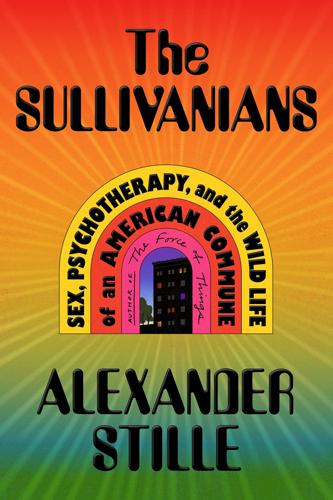
The Sullivanians: Sex, Psychotherapy, and the Wild Life of an American Commune
by
Alexander Stille
Published 19 Jun 2023
For Richard Price, the Three Mile Island response suddenly gave him the impression that he no longer had control of his life. He canceled two readings he had been looking forward to doing in the Boston area because Ralph Klein—a psychologist, hardly an expert on nuclear energy—insisted that with the “prevailing winds,” it would be unsafe. For Steve Meshnick, who was in his medical residency at the time, Three Mile Island represented a kind of dividing line in his mind. “To me, that was the first time I realized that I had a separate personality from the group. I knew the radiation thing was bullshit and that we were not going to die,” he said. He knew that the small doses of radiation involved were not a threat to people living a few miles from Harrisburg, let alone in New York.
…
Saul Newton got up and announced a new series of stricter AIDS-related measures: from now on, members who worked as doctors or other medical personnel would have to move out of their apartments and live separately, owing to the possibility that they might come into contact with HIV. This would have an impact on Alice and Bill, as he was doing his medical residency. The measure did not seem in any way necessary: there were virtually no medical professionals in the United States or elsewhere who had contracted AIDS as a result of incidental contact in the workplace. The policy was put up for a vote through a show of hands. There were no secret ballots in the Fourth Wall: open votes made dissent dangerous and virtually nonexistent.
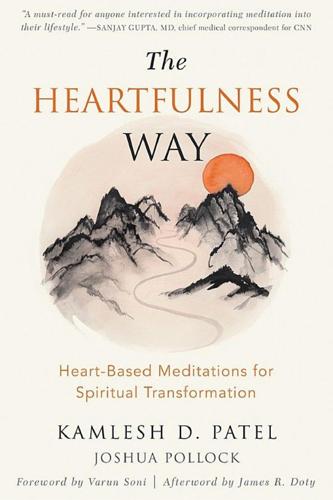
The Heartfulness Way: Heart-Based Meditations for Spiritual Transformation
by
Kamlesh D. Patel
and
Joshua Pollock
Published 31 May 2018
However, they dreamed of a different life for themselves and their future family, and so upon graduating from medical school, they bravely moved to the United States. I was born a few years after that as part of the first generation of ethnically Indian Hindus raised in the United States. When my parents moved to the United States, they were still young medical residents. But in just a few short years, they went from new immigrants struggling to support themselves to new physicians struggling to support not only themselves, but also their children, their siblings, and their parents. Through their extraordinary work ethic and dedication to family, my parents eventually flourished in their careers, and I grew up as the direct beneficiary of their American Dream, enjoying the many privileges and resources that they worked so hard to attain.
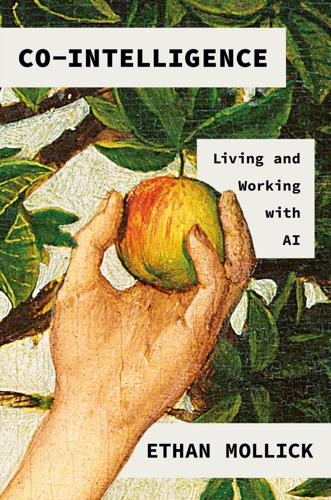
Co-Intelligence: Living and Working With AI
by
Ethan Mollick
Published 2 Apr 2024
Education is followed by years of on-the-job training, which can range from organized training programs to a few years of late nights and angry bosses yelling at you about menial tasks. This system was not designed in a centralized way as parts of our educational system were, but it is critical to the way we actually learn to do real work. People have traditionally gained expertise by starting at the bottom. The carpenter’s apprentice, the intern at a magazine, the medical resident. These are usually pretty horrible jobs, but they serve a purpose. Only by learning from more experienced experts in a field, and trying and failing under their tutelage, do amateurs become experts. But that is likely to change rapidly with AI. As much as the intern or first-year lawyer doesn’t like being yelled at for doing a bad job, their boss usually would rather just see the job done fast than deal with the emotions and errors of a real human being.
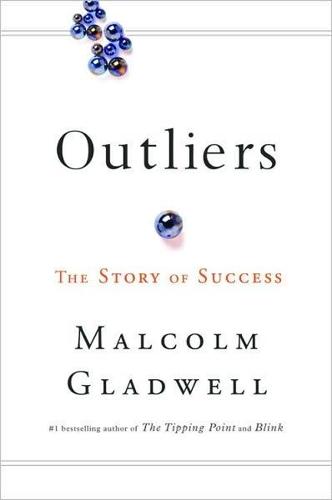
Outliers
by
Malcolm Gladwell
Published 29 May 2017
We are in the same room. But it's a huge bedroom and you can split it into two, and we have beds on other sides. Me and my mom are very close. She spoke in the matter-of-fact way of children who have no way of knowing how unusual their situation is. She had the hours of a lawyer trying to make partner, or of a medical resident. All that was missing were the dark circles under her eyes and a steaming cup of coffee, except that she was too young for either. “Sometimes I don't go to sleep when I'm supposed to,” Marita continued. “I go to sleep at, like, twelve o'clock, and the next afternoon, it will hit me. And I will doze off in class.
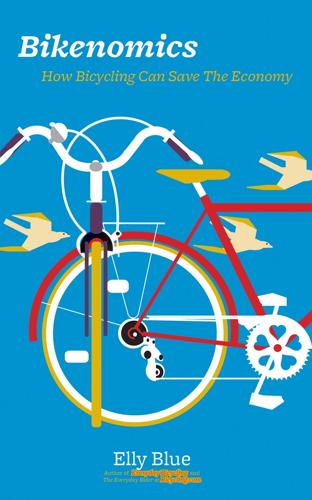
Bikenomics: How Bicycling Can Save the Economy (Bicycle)
by
Elly Blue
Published 29 Nov 2014
Their rise provides new opportunities for leadership—and proves the effectiveness of people riding together and using bicycles to change the shape of their own neighborhoods and communities. In 2009, Emily Finch was in her early thirties, living in the small town of Williamsport, Pennsylvania.161 Her husband was in his medical residency, and she was raising five children with another one on the way. She wasn’t happy. She knew that something in her life had to change, but she didn’t know what. One day an internet search turned up a picture of a bakfiets, a type of Dutch bicycle that literally means “box bike.” The bikes are nine feet long, weigh 100 pounds unloaded, cost $3,000, and come equipped with a hardwood box in the front with a bench for children.
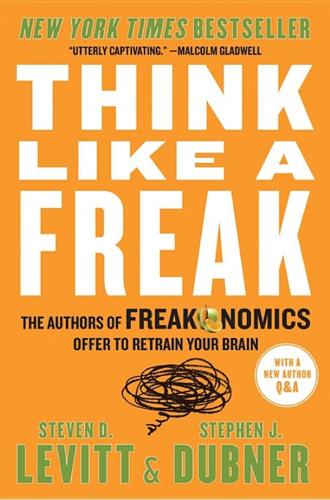
Think Like a Freak
by
Steven D. Levitt
and
Stephen J. Dubner
Published 11 May 2014
But the medical establishment was quick to point out the glaring flaw in this theory: How could bacteria possibly survive in the acidic cauldron of the stomach? And so the ulcer-treatment juggernaut rolled on. There wasn’t much of an incentive to find a cure—not, at least, by the people whose careers depended on the prevailing ulcer treatment. Fortunately the world is more diverse than that. In 1981, a young Australian medical resident named Barry Marshall was on the hunt for a research project. He had just taken up a rotation in the gastroenterology unit at Royal Perth Hospital, where a senior pathologist had stumbled onto a mystery. As Marshall later described it: “We’ve got 20 patients with bacteria in their stomach, where you shouldn’t have bacteria living because there’s too much acid.”

A Wealth of Common Sense: Why Simplicity Trumps Complexity in Any Investment Plan
by
Ben Carlson
Published 14 May 2015
When you try to be all things at all times as an investor you end up losing touch with reality because you don't focus on the important aspects of portfolio management. Daniel Kahneman once said, “Two important facts about our minds: We can be blind to the obvious and also blind to the blindness.” Psychologists find that people are aware of the biased thinking in others, but they tend to underestimate biased thinking in themselves. A study of medical residents founds that 61 percent said they were not influenced by gifts from the drug companies, but only 16 percent said the same thing about other physicians.9 Everyone else is an idiot, but surely not me, is a dangerous attitude to carry. Admitting the fact that you don't know everything is a good first step towards becoming a better investor and understanding your own biased behavior.
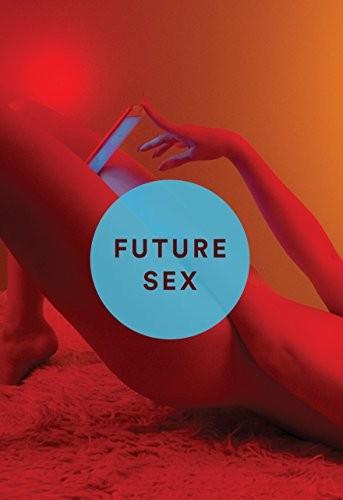
Future Sex
by
Emily Witt
Published 10 Oct 2016
She questioned other people, too, and could come down harshly. Winning her approval or earning her notice became a part of the room’s dynamic. A man sitting on the floor confessed himself a skeptic of the benefits of orgasmic meditation, and Nicole bristled. “Then why are you here?” she asked. “I’m not here to convince you.” A medical resident at Stanford University, a divorcee still in her twenties with whom I had been chatting earlier, said, “I’m here because I haven’t had an orgasm in five years.” When another woman introduced herself, Nicole interrupted her with an air of psychic prognosis. “Are you from San Diego?” she asked.
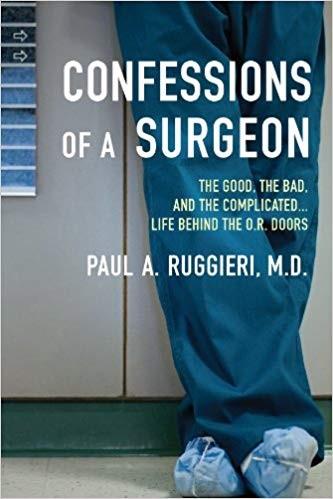
Confessions of a Surgeon: The Good, the Bad, and the Complicated...Life Behind the O.R. Doors
by
Paul A. Ruggieri
Published 3 Jan 2012
Libby Zion’s death exposed the exhaustive pressures and lack of supervision that were the norm in many training programs, both of which increased the potential for serious mistakes, and led to reforms including the number of hours residents could work continuously without sleep. Libby’s death ultimately closed the door on residencies rooted in the old way of thinking: “Survive no matter what the circumstances.” Initially, in the late 1980s, the reforms instituted in New York first trickled into the medical residencies only. It wasn’t until the publication of the landmark paper To Err Is Human—which concluded that 44,000 to 98,000 people died in hospitals each year from medical errors—that these reforms found their way to the surgical teaching programs in this country as well. In July 2003, all surgical residencies in this country changed, for better or worse, depending on whom you talk to.
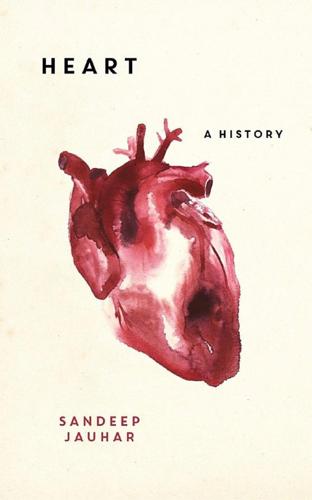
Heart: A History
by
Sandeep Jauhar
Published 17 Sep 2018
Nowadays, most stents used in the United States are coated with rapamycin or a similar drug, which has nearly eliminated in-stent scarring. From a self-surgery in a tiny operating room in Eberswalde, Germany, cardiac catheterization has been transformed into a hugely profitable, multibillion-dollar industry. Unfortunately, Gruentzig never got a chance to witness this revolution. He and his second wife, a medical resident, died on October 27, 1985, when the private plane he was piloting crashed in a storm in rural Georgia. He was forty-six years old. That year was a tragic one for interventional cardiology. Smoking caught up with the field’s heroes. Mason Sones died of metastatic lung cancer; Charles Dotter, ironically, of complications of coronary bypass surgery.

Uncanny Valley: A Memoir
by
Anna Wiener
Published 14 Jan 2020
In the other direction was Valencia Street, a living diorama of late-stage gentrification: third-wave-coffee shops selling paleo lattes, juice bars hawking turmeric shots, waifish Australians clutching branded paper bags from spartan boutiques. The apartment was cozy and welcoming, full of strange artifacts: an upright piano with the hammers exposed, a headless mannequin covered in hand-drawn hieroglyphs. In the bathroom, a small line of half-melted havdalah candles lined the edge of the tub. The third roommate was a medical resident who kept impossible hours, appearing only occasionally to make generous pots of oatmeal or host men’s circles in the living room. It seemed like the sort of place where the roommates would share towels, laying claim to whichever smelled least like mildew, and it was. I loved being there. That fall, Noah was experimenting with larger-format communal living and had sublet his room to start a collective in Berkeley.
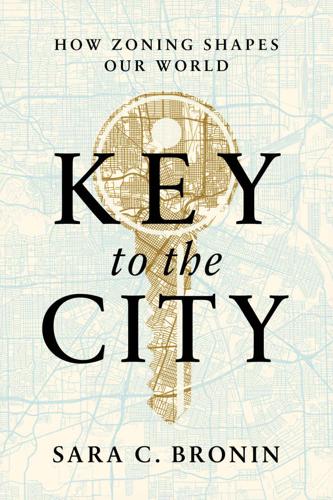
Key to the City: How Zoning Shapes Our World
by
Sara C. Bronin
Published 30 Sep 2024
Worse, the Texas heat warped the tracks every summer—one especially hot year, a train derailed into a neighbor’s property. Nonetheless, my parents decided that the underpriced lot had value, and so they gambled their savings on the down payment. Their investment paid off. Year after year, they managed to find renters, often medical residents and young couples, willing to tolerate the trains. After eleven years, they had amassed enough money to demolish the house and place a deposit for a two-story custom build—not for a rental, but for our own home. To boost the deposit, they sold our house in Crosby, and we all temporarily moved back in with my grandparents.
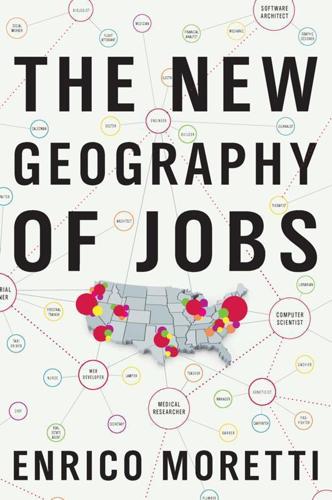
The New Geography of Jobs
by
Enrico Moretti
Published 21 May 2012
Overall, limiting the number of unskilled immigrants is unlikely to have major negative effects for natives, but limiting the number of skilled immigrants could have significant negative effects, especially for our low-skilled workers. Recent research by Jennifer Hunt identifies which kind of highly skilled immigrant is most likely to bring benefits to American natives. Using a detailed sample of college-educated immigrants, she found that those who arrived as postdoctoral fellows and medical residents have been most successful in generating original research and patents and vastly outperform natives. By contrast, immigrants who arrived thanks to a family member who was already in the United States perform at the same level as natives. It is in America’s self-interest to radically reform its immigration policy to favor immigrants with college degrees, master’s degrees, and PhDs.
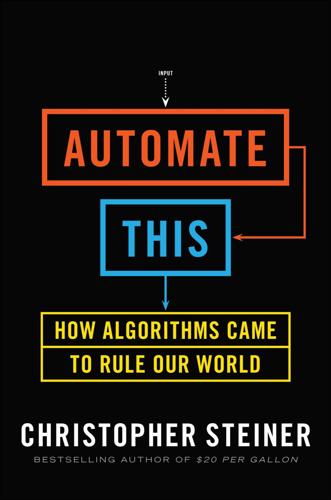
Automate This: How Algorithms Came to Rule Our World
by
Christopher Steiner
Published 29 Aug 2012
Simpson jurors evaluated, 177 see also litigation Lawrence, Peter, 1–2 least squares method, 62–63 Le Corbusier, 56 Lee, Spike, 87 Lehman Brothers, 191, 192 Leibniz, Gottfried, 26, 57–61, 68, 72 binary language of, 57–58, 60–61, 71, 73 Leipzig, 58 Lennon, John, 104, 107–8 “In My Life” claimed by, 110–11 as math savant, 103 “Let It Be,” 103 Levchin, Max, 188 leverage, trading on margin with, 51 Lewis, Michael, 141, 202 Li, David X., 65 Liber Abaci (The Book of Calculation) (Fibonacci), 56–57 Library of Congress, 193 Lin, Jeremy, 142–43 linguistics, 187 liquidity crisis, potential, 51–52 Lisp, 12, 93, 94 lit fiber, 114, 120 lithium hydroxide, 166 Lithuania, 69 litigation: health insurers and, 181 stock prices and potential, 27 Walgreens and, 156 logic: algorithms and, 71 broken down into mechanical operations, 58–59 logic theory, 73 logic trees, 171 London, 59, 66–67, 68, 121, 198 Los Angeles International Airport, security algorithm at, 135 Los Angeles Lakers, 143 loudness, 93, 106 Lovelace, Ada, 73 Lovell, James, 165–67 Lulea, Sweden, 204 lunar module, 166 lung cancer, 154 McAfee, Andrew P., 217–18 McCartney, Paul, 104, 105, 107 “In My Life” claimed by, 110–11 as math savant, 103 McCready, Mike, 78–83, 85–89 McGuire, Terry, 145, 168–72, 174–76 machine-learning algorithms, 79, 100 Magnetar Capital, 3–4, 10 Mahler, Gustav, 98 Major Market Index, 40, 41 Making of a Fly, The (Lawrence), prices of, 1–2 Malyshev, Mikhail, 190 management consultants, 189 margin, trading with, 51 market cap, price swings and, 49 market makers: bids and offers by, 35–36 Peterffy as, 31, 35–36, 38, 51 market risk, 66 Maroon 5, 85 Marseille, 147, 149 Marshall, Andrew, 140 Martin, George, 108–10 Martin, Max (Martin Sandberg), 88–89 math: behind algorithms, 6, 53 education in, 218–20 mathematicians: algorithms and, 6, 71 online, 53 on Wall Street, 13, 23, 24, 27, 71, 179, 185, 201–3 Mattingly, Ken, 167 MBAs: eLoyalty’s experience with, 187 Peterffy’s refusal to hire, 47 MDCT scans, 154 measurement errors, distribution of, 63 medical algorithms, 54, 146 in diagnosis and testing, 151–56, 216 in organ sharing, 147–51 patient data and home monitoring in, 158–59 physicians’ practice and, 156–62 medical residencies, game theory and matching for, 147 medicine, evidence-based, 156 Mehta, Puneet, 200, 201 melodies, 82, 87, 93 Mercer, Robert, 178–80 Merrill Lynch, 191, 192, 200 Messiah, 68 metal: trading of, 27 volatility of, 22 MGM, 135 Miami University, 91 Michigan, 201 Michigan, University of, 136 Microsoft, 67, 124, 209 microwaves, 124 Midas (algorithm), 134 Miller, Andre, 143 mind-reading bots, 178, 181–83 Minneapolis, Minn., 192–93 minor-league statistics, baseball, 141 MIT, 24, 73, 128, 160, 179, 188, 217 Mocatta & Goldsmid, 20 Mocatta Group, 20, 21–25, 31 model building, predictive, 63 modifiers, 71 Boolean, 72–73 Mojo magazine, 110 Moneyball (Lewis), 141 money markets, 214 money streams, present value of future, 57 Montalenti, Andrew, 200–201 Morgan Stanley, 116, 128, 186, 191, 200–201, 204 mortgage-backed securities, 203 mortgages, 57 defaults on, 65 quantitative, 202 subprime, 65, 202, 216 Mosaic, 116 movies, algorithms and, 75–76 Mozart, Wolfgang Amadeus, 77, 89, 90, 91, 96 MP3 sharing, 83 M Resort Spa, sports betting at, 133–35 Mubarak, Hosni, 140 Muller, Peter, 128 music, 214 algorithms in creation of, 76–77, 89–103 decoding Beatles’, 70, 103–11 disruptors in, 102–3 homogenization or variety in, 88–89 outliers in, 102 predictive algorithms for success of, 77–89 Music X-Ray, 86–87 Musikalisches Würfelspiel, 91 mutual funds, 50 MyCityWay, 200 Najarian, John A., 119 Naples, 121 Napoleon I, emperor of France, 121 Napster, 81 Narrative Science, 218 NASA: Houston mission control of, 166, 175 predictive science at, 61, 164, 165–72, 174–77, 180, 194 Nasdaq, 177 algorithm dominance of, 49 Peterffy and, 11–17, 32, 42, 47–48, 185 terminals of, 14–17, 42 trading method at, 14 National Heart, Lung, and Blood Institute, 159 Nationsbank, Chicago Research and Trading Group bought by, 46 NBA, 142–43 Neanderthals, human crossbreeding with, 161 Nebraska, 79–80, 85 Netflix, 112, 207 Netherlands, 121 Netscape, 116, 188 Nevermind, 102 New England Patriots, 134 New Jersey, 115, 116 Newsweek, 126 Newton, Isaac, 57, 58, 59, 64, 65 New York, N.Y., 122, 130, 192, 201–2, 206 communication between markets in Chicago and, 42, 113–18, 123–24 financial markets in, 20, 198 high school matching algorithm in, 147–48 McCready’s move to, 85 Mocatta’s headquarters in, 26 Peterffy’s arrival in, 19 tech startups in, 210 New York Commodities Exchange (NYCE), 26 New Yorker, 156 New York Giants, 134 New York Knicks, 143 New York magazine, 34 New York State, health department of, 160 New York Stock Exchange (NYSE), 3, 38–40, 44–45, 49, 83, 123, 184–85 New York Times, 123, 158 New York University, 37, 132, 136, 201, 202 New Zealand, 77, 100, 191 Nietzsche, Friedrich, 69 Nirvana, 102 Nixon, Richard M., 140, 165 Nobel Prize, 23, 106 North Carolina, 48, 204 Northwestern University, 145, 186 Kellogg School of Management at, 10 Novak, Ben, 77–79, 83, 85, 86 NSA, 137 NuclearPhynance, 124 nuclear power, 139 nuclear weapons, in Iran, 137, 138–39 number theory, 65 numerals: Arabic-Indian, 56 Roman, 56 NYSE composite index, 40, 41 Oakland Athletics, 141 Obama, Barack, 46, 218–19 Occupy Wall Street, 210 O’Connor & Associates, 40, 46 OEX, see S&P 100 index Ohio, 91 oil prices, 54 OkCupid, 144–45 Olivetti home computers, 27 opera, 92, 93, 95 Operation Match, 144 opinions-driven people, 173, 174, 175 OptionMonster, 119 option prices, probability and statistics in, 27 options: Black-Scholes formula and, 23 call, 21–22 commodities, 22 definition of, 21 pricing of, 22 put, 22 options contracts, 30 options trading, 36 algorithms in, 22–23, 24, 114–15 Oregon, University of, 96–97 organ donor networks: algorithms in, 149–51, 152, 214 game theory in, 147–49 oscilloscopes, 32 Outkast, 102 outliers, 63 musical, 102 outputs, algorithmic, 54 Pacific Exchange, 40 Page, Larry, 213 PageRank, 213–14 pairs matching, 148–51 pairs trading, 31 Pakistan, 191 Pandora, 6–7, 83 Papanikolaou, Georgios, 153 Pap tests, 152, 153–54 Parham, Peter, 161 Paris, 56, 59, 121 Paris Stock Exchange, 122 Parse.ly, 201 partial differential equations, 23 Pascal, Blaise, 59, 66–67 pathologists, 153 patient data, real-time, 158–59 patterns, in music, 89, 93, 96 Patterson, Nick, 160–61 PayPal, 188 PCs, Quotron data for, 33, 37, 39 pecking orders, social, 212–14 Pennsylvania, 115, 116 Pennsylvania, University of, 49 pension funds, 202 Pentagon, 168 Perfectmatch.com, 144 Perry, Katy, 89 Persia, 54 Peru, 91 Peterffy, Thomas: ambitions of, 27 on AMEX, 28–38 automated trading by, 41–42, 47–48, 113, 116 background and early career of, 18–20 Correlator algorithm of, 42–45 early handheld computers developed by, 36–39, 41, 44–45 earnings of, 17, 37, 46, 48, 51 fear that algorithms have gone too far by, 51 hackers hired by, 24–27 independence retained by, 46–47 on index funds, 41–46 at Interactive Brokers, 47–48 as market maker, 31, 35–36, 38, 51 at Mocatta, 20–28, 31 Nasdaq and, 11–18, 32, 42, 47–48, 185 new technology innovated by, 15–16 options trading algorithm of, 22–23, 24 as outsider, 31–32 profit guidelines of, 29 as programmer, 12, 15–16, 17, 20–21, 26–27, 38, 48, 62 Quotron hack of, 32–35 stock options algorithm as goal of, 27 Timber Hill trading operation of, see Timber Hill traders eliminated by, 12–18 trading floor methods of, 28–34 trading instincts of, 18, 26 World Trade Center offices of, 11, 39, 42, 43, 44 Petty, Tom, 84 pharmaceutical companies, 146, 155, 186 pharmacists, automation and, 154–56 Philips, 159 philosophy, Leibniz on, 57 phone lines: cross-country, 41 dedicated, 39, 42 phones, cell, 124–25 phosphate levels, 162 Physicians’ Desk Reference (PDR), 146 physicists, 62, 157 algorithms and, 6 on Wall Street, 14, 37, 119, 185, 190, 207 pianos, 108–9 Pincus, Mark, 206 Pisa, 56 pitch, 82, 93, 106 Pittsburgh International Airport, security algorithm at, 136 Pittsburgh Pirates, 141 Pius II, Pope, 69 Plimpton, George, 141–42 pneumonia, 158 poetry, composed by algorithm, 100–101 poker, 127–28 algorithms for, 129–35, 147, 150 Poland, 69, 91 Polyphonic HMI, 77–79, 82–83, 85 predictive algorithms, 54, 61, 62–65 prescriptions, mistakes with, 151, 155–56 present value, of future money streams, 57 pressure, thriving under, 169–70 prime numbers, general distribution pattern of, 65 probability theory, 66–68 in option prices, 27 problem solving, cooperative, 145 Procter & Gamble, 3 programmers: Cope as, 92–93 at eLoyalty, 182–83 Peterffy as, 12, 15–16, 17, 20–21, 26–27, 38, 48, 62 on Wall Street, 13, 14, 24, 46, 47, 53, 188, 191, 203, 207 programming, 188 education for, 218–20 learning, 9–10 simple algorithms in, 54 Progress Energy, 48 Project TACT (Technical Automated Compatibility Testing), 144 proprietary code, 190 proprietary trading, algorithmic, 184 Prussia, 69, 121 PSE, 40 pseudocholinesterase deficiency, 160 psychiatry, 163, 171 psychology, 178 Pu, Yihao, 190 Pulitzer Prize, 97 Purdue University, 170, 172 put options, 22, 43–45 Pythagorean algorithm, 64 quadratic equations, 63, 65 quants (quantitative analysts), 6, 46, 124, 133, 198, 200, 202–3, 204, 205 Leibniz as, 60 Wall Street’s monopoly on, 183, 190, 191, 192 Queen’s College, 72 quizzes, and OkCupid’s algorithms, 145 Quotron machine, 32–35, 37 Rachmaninoff, Sergei, 91, 96 Radiohead, 86 radiologists, 154 radio transmitters, in trading, 39, 41 railroad rights-of-way, 115–17 reactions-based people, 173–74, 195 ReadyForZero, 207 real estate, 192 on Redfin, 207 recruitment, of math and engineering students, 24 Redfin, 192, 206–7, 210 reflections-driven people, 173, 174, 182 refraction, indexes of, 15 regression analysis, 62 Relativity Technologies, 189 Renaissance Technologies, 160, 179–80, 207–8 Medallion Fund of, 207–8 retirement, 50, 214 Reuter, Paul Julius, 122 Rhode Island hold ‘em poker, 131 rhythms, 82, 86, 87, 89 Richmond, Va., 95 Richmond Times-Dispatch, 95 rickets, 162 ride sharing, algorithm for, 130 riffs, 86 Riker, William H., 136 Ritchie, Joe, 40, 46 Rochester, N.Y., 154 Rolling Stones, 86 Rondo, Rajon, 143 Ross, Robert, 143–44 Roth, Al, 147–49 Rothschild, Nathan, 121–22 Royal Society, London, 59 RSB40, 143 runners, 39, 122 Russia, 69, 193 intelligence of, 136 Russian debt default of 1998, 64 Rutgers University, 144 Ryan, Lee, 79 Saint Petersburg Academy of Sciences, 69 Sam Goody, 83 Sandberg, Martin (Max Martin), 88–89 Sandholm, Tuomas: organ donor matching algorithm of, 147–51 poker algorithm of, 128–33, 147, 150 S&P 100 index, 40–41 S&P 500 index, 40–41, 51, 114–15, 218 Santa Cruz, Calif., 90, 95, 99 satellites, 60 Savage Beast, 83 Saverin, Eduardo, 199 Scholes, Myron, 23, 62, 105–6 schools, matching algorithm for, 147–48 Schubert, Franz, 98 Schwartz, Pepper, 144 science, education in, 139–40, 218–20 scientists, on Wall Street, 46, 186 Scott, Riley, 9 scripts, algorithms for writing, 76 Seattle, Wash., 192, 207 securities, 113, 114–15 mortgage-backed, 203 options on, 21 Securities and Exchange Commission (SEC), 185 semiconductors, 60, 186 sentence structure, 62 Sequoia Capital, 158 Seven Bridges of Königsberg, 69, 111 Shannon, Claude, 73–74 Shuruppak, 55 Silicon Valley, 53, 81, 90, 116, 188, 189, 215 hackers in, 8 resurgence of, 198–211, 216 Y Combinator program in, 9, 207 silver, 27 Simons, James, 179–80, 208, 219 Simpson, O.
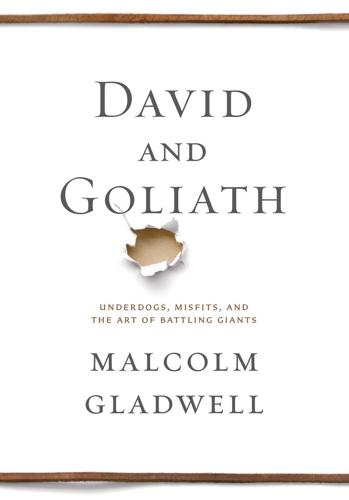
David and Goliath: Underdogs, Misfits, and the Art of Battling Giants
by
Malcolm Gladwell
Published 30 Sep 2013
He would say whatever came into his mind.” Over the course of his career, he would end up being fired seven times, the first time during his residency when he angrily defied the head nurse at Presbyterian Hospital in Chicago. One of his former coworkers remembers Freireich coming across a routine error made by one of his medical residents. A minor laboratory finding had been overlooked. “The patient died,” the doctor said. “It wasn’t because of the error. Jay screamed at him right there in the ward, in front of five or six doctors and nurses. He called him a murderer, and the guy broke down and cried.” Almost everything said about Freireich by his friends contains a “but.”
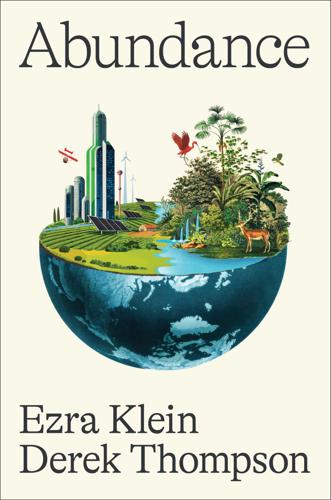
Abundance
by
Ezra Klein
and
Derek Thompson
Published 18 Mar 2025
Jen Psaki, @jrpsaki, tweet, January 15, 2021, 9:44 a.m., https://x.com/jrpsaki/status/1350121790148902912?s=20. 67. Casey B. Mulligan, “We Need More ‘Warp Speed’ Operations,” Wall Street Journal, October 6, 2023, https://www.wsj.com/articles/we-need-more-operation-warp-speed-covid-cancer-diabetes-bureaucracy-fda-ace77028. 68. Robert Orr, “Unmatched: Repairing the U.S. Medical Residency Pipeline,” Niskanen Center, September 2021, https://www.niskanencenter.org/wp-content/uploads/2021/09/Unmatched-Repairing-the-US-Residency-Pipeline.pdf, 11. 69. Orr, “Unmatched,” p. 12, fig. 4. 70. “Population Growth 1980–2005,” U.S. News & World Report, January 9, 2006, https://www.usnews.com/opinion/blogs/barone/2006/01/09/population-growth-1980-2005#:~:text=The%20nation’s%20population%20rose%2031,%2C%20and%20Tennessee%20(30). 71.
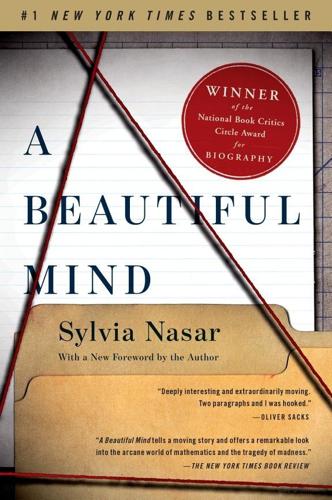
A Beautiful Mind
by
Sylvia Nasar
Published 11 Jun 1998
• • • One Hundred Fifteen Mill Street, Belmont, Massachusetts, was, and still is, a verdant 240–acre expanse of rolling lawns and winding lanes and a scattering of buildings of old brick and ironwork nestled among majestic trees or perched airily on rises — a precise copy, that is to say, of a well-manicured New England college campus of late-nineteenth-century vintage.7 Many of its smaller buildings were designed to resemble the homes of wealthy Boston Brahmins — long the bulk of McLean’s clientele. A psychiatrist who reviewed the hospital for the American Psychiatric Association in the late 1940s recalled, “There were all these little two-story homes with suites — kitchen, living room, bedroom. They had suites for the cook, the maid, the chauffeur.”8 Upham House, a former medical resident recalled, had four corner suites per floor and on one of its floors all four patients turned out to be members of the Harvard Club! McLean was, as it still is, connected to Harvard Medical School. So many of the wealthy, intellectual, and famous came there — Sylvia Plath, Ray Charles, and Robert Lowell among them9 — that many people around Cambridge had come to think of it less as a mental hospital and more as a kind of sanatorium where high-strung poets, professors, and graduate students wound up for a special kind of R&R.
…
Stanton had been charged by McLean’s trustees in 1954 to modernize McLean.45 Before Stanton arrived in the early 1950s, as Kahne recalled, “The nurses were spending all their time classifying fur coats and writing thank you letters.” Moreover, patients spent most of the day lying in bed as if they were suffering from some physical ailment. Stanton hired a large number of nurses and psychiatrists, expanded the medical residency program, instituted an intensive psychotherapy program, and organized social, educational, and work activities. McLean’s treatment philosophy boiled down to the notion that “it was impossible to be social and crazy at the same time.”46 The staff was dedicated to encouraging all new patients, no matter what the diagnosis, to relate.
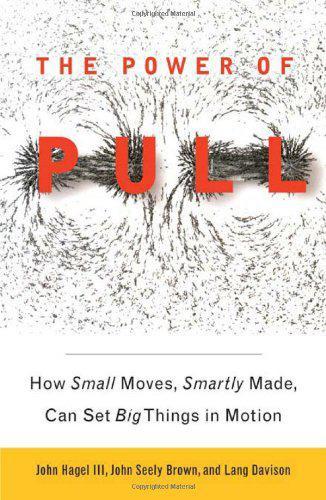
The Power of Pull: How Small Moves, Smartly Made, Can Set Big Things in Motion
by
John Hagel Iii
and
John Seely Brown
Published 12 Apr 2010
The books are the explicit knowledge telling you what to do—which is eminently necessary—but knowing how to perform this kind of surgery critically depends on an extended apprenticeship process in which tacit knowledge gets communicated through observation and participation on the periphery of these operations. That’s the whole raison d’être of apprenticeship, including the medical residency: learning by doing under supervision. Another example of tacit knowledge in action is brewing beer. A brewer recently explained to us how he moved from using kits in the early 1990s to following recipes shortly thereafter, while keep logs of the process. Then he started tinkering with the recipes (still taking notes), experimenting with different mixes of hops, yeast, and so on, still carefully noting the process and the results.
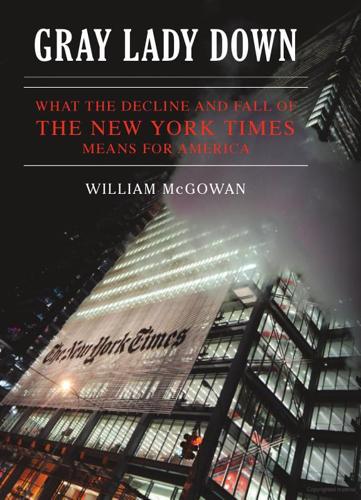
Gray Lady Down: What the Decline and Fall of the New York Times Means for America
by
William McGowan
Published 16 Nov 2010
And whether his actions reflected personal pathology, religious extremism, or both together, how had he come to be commissioned as a highly trained U.S. Army medical officer, and promoted to the rank of major just six months earlier? The Washington Post intensified these questions by reporting that when Hasan was a medical resident in psychiatry at Walter Reed Army Hospital, he gave a PowerPoint presentation not on a medical topic but on “The Koranic World View As It Relates to Muslims in the U.S. Military.” He included the comment, “It’s getting harder and harder for Muslims in the service to morally justify being in a military that seems constantly engaged against fellow Muslims,” and presented some basics of Islamic thought and teaching, such as: “We [Muslims] love death more then [sic] you love life!”

Blink: The Power of Thinking Without Thinking
by
Malcolm Gladwell
Published 1 Jan 2005
The problem with that estimate, though, is that it isn’t very accurate. One of the things Reilly did early in his campaign at Cook, for instance, was to put together twenty perfectly typical case histories of people with chest pain and give the histories to a group of doctors—cardiologists, internists, emergency room docs, and medical residents—people, in other words, who had lots of experience making estimates about chest pain. The point was to see how much agreement there was about who among the twenty cases was actually having a heart attack. What Reilly found was that there really wasn’t any agreement at all. The answers were all over the map.

Mistakes Were Made (But Not by Me): Why We Justify Foolish Beliefs, Bad Decisions, and Hurtful Acts
by
Carol Tavris
and
Elliot Aronson
Published 6 May 2007
Were the travelers aware of the power of reciprocity to affect their behavior? Not at all. But once reciprocity kicks in, self-justification will follow: "I've always wanted a copy of the Bhagavad Gita; what is it, exactly?" The power of the flower is unconscious. "It's only a flower," the traveler says. "It's only a pizza," the medical resident says. "It's only a small donation that we need to have this educational symposium," the physician says. Yet the power of the flower is one reason that the amount of contact doctors have with pharmaceutical representatives is positively correlated with the cost of the drugs the doctors later prescribe.

The Girl in the Road
by
Monica Byrne
Published 19 May 2014
About what India was like. His feelings on Eritrea (“Let them be”). How many languages he spoke (five: Malayalam, Hindi, Tamil, Kannada, English). How old he was (twenty-one, one year older than me). How he liked Ethiopia (“fascinating”). Where else he’d been in Ethiopia (only Ambo so far, on a trip with the other medical residents, to bathe in the hot springs). What caste he belonged to (Brahmin mother, on her father’s side; Kshatriya father). What kind of music he liked. He liked Ethiopian jazz. He had real vinyl records and a record player, brought all the way from India in a trunk. He’d been combing the stores for pre-Derg records.
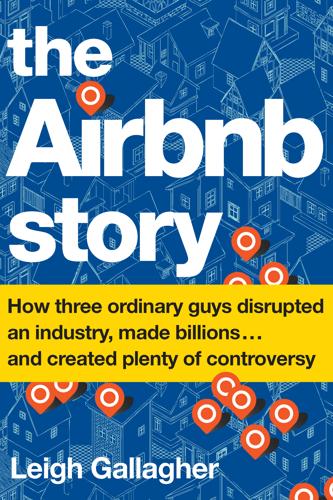
The Airbnb Story: How Three Ordinary Guys Disrupted an Industry, Made Billions...and Created Plenty of Controversy
by
Leigh Gallagher
Published 14 Feb 2017
A few other things fell into place. Blecharczyk had told his fiancée, Elizabeth Morey, he’d be back in three months to start their life together in Boston. But on the same day Chesky, Gebbia, and Blecharczyk got their term sheet, Morey learned she’d been matched at Stanford’s Lucile Packard Children’s Hospital for her medical residency. Blecharczyk could make a go of the start-up, and Morey would move out to San Francisco. Over the next few months, the groundwork they had laid in New York continued to pay off. By August, their twenty to thirty bookings a day had hit seventy bookings a day. They started to get attention for quirkier listings, like treehouses, igloos, and tepees.
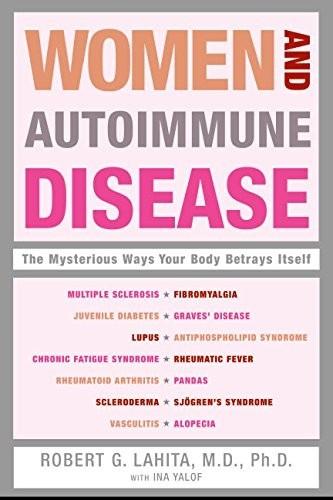
Women and Autoimmune Disease
by
Robert G. Lahita
Published 1 Jan 2004
Ronald Asherson, ed., The Antiphospholipid Syndrome (London: Elsevier Press, 2002). The textbook for this illness, edited for the professional. � The Immune System C. Janeway, P. Travers, M. Walport, and M. Shlomchik, Immunobiology, 5th ed. (New York: Garland Publications, 2001). This is the book that I use to teach medical residents and young physicians about basic immunology. It is a bit complicated but will be worth it for the very enthusiastic reader. The figures are terrific. � Vasculitis and the Circulation E. Ball and S. Louis Bridges Jr., eds., Vasculitis (New York: Oxford University Press, 2001). This is a comprehensive review of this very difficult topic.
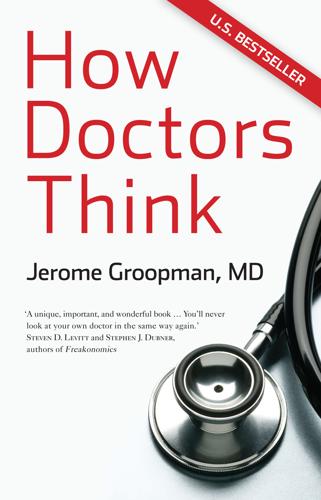
How Doctors Think
by
Jerome Groopman
Published 15 Jan 2007
Mark Graber presented a study of one hundred misdiagnoses highlighting the high frequency of cognitive pitfalls in "Diagnostic error in internal medicine," Archives of Internal Medicine 165 (2005), pp. 1493–1499. Studies of the use of computers to improve diagnosis have shown relatively small benefits, primarily among students rather than medical residents or attending physicians. In some instances the "computer consultation" was detrimental and caused the clinician to latch on to a misdiagnosis: Charles P. Friedman et al., "Enhancement of clinicians' diagnostic reasoning by computer-based consultation: A multiple study of 2 systems," JAMA 282 (1999), pp. 1851–1856. 1.
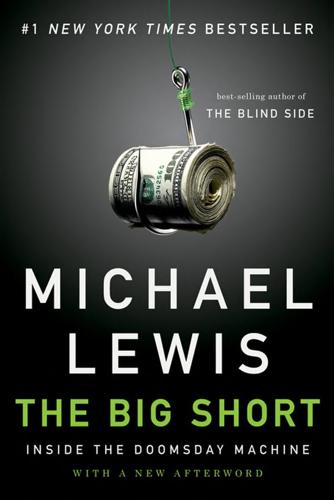
The Big Short: Inside the Doomsday Machine
by
Michael Lewis
Published 1 Nov 2009
To his Goldman Sachs saleswoman, he wrote, "I think I am short housing but am I not, because CDSs are criminal?" When, a few months later, Goldman Sachs announced it was setting aside $542,000 per employee for the 2006 bonus pool, he wrote again: "As a former gas station attendant, parking lot attendant, medical resident and current Goldman Sachs screwee, I am offended." In the middle of 2006, he began to hear of other money managers who wanted to make the same bet he did. A few actually called and asked for his help. "I had all these people telling me I needed to get out of this trade," he said. "And I was looking at these other people and thinking how lucky they were to be able to get into this trade."
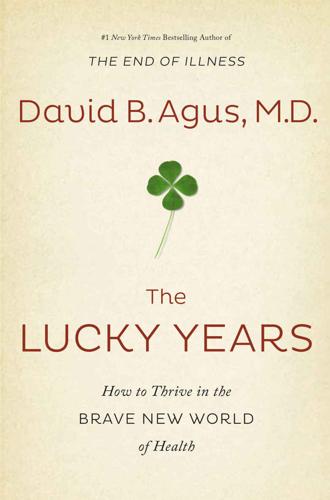
The Lucky Years: How to Thrive in the Brave New World of Health
by
David B. Agus
Published 29 Dec 2015
In fact, “Osleriana”—language from his written works—still appears frequently in the Journal of the American Medical Association, as a reminder of his wise and common tidbits. Perhaps Osler’s greatest contribution to medicine and to health care in general was to require that students learn by example—from seeing and talking to real patients. He established the first medical residency program, an idea that would eventually spread across the Western world and become the main system by which teaching hospitals operate. Even today, when you walk into a teaching hospital, much of the medical staff is composed of doctors in training. Osler also initiated another tradition in medical school by getting his students to the bedside early in their training.
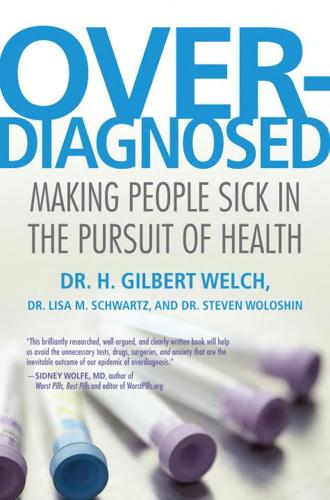
Overdiagnosed: Making People Sick in the Pursuit of Health
by
H. Gilbert Welch
,
Lisa M. Schwartz
and
Steven Woloshin
Published 18 Jan 2011
Although the investigators envisioned that monitoring would eventually be done at patients’ homes, the study was initiated in the hospital in order to standardize the process. A heart attack patient who was doing well and was ready to be discharged was first sent to a special unit and attached to a small heart monitor. The job of responding to the monitor’s findings fell to the medical residents like me. It drove us nuts. The patients were well, but their monitors were always going off. It seemed as though every one of them had an abnormality. And we were treating them. We were constantly adjusting medications to try to find the right drug and the right dose to make the rhythm normal.
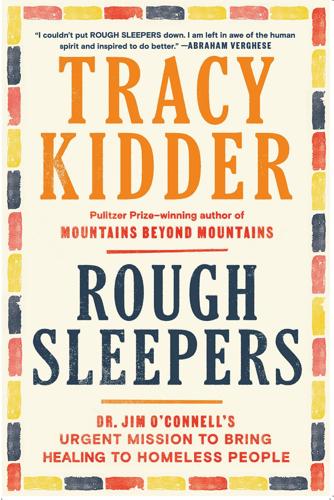
Rough Sleepers: Dr. Jim O'Connell's Urgent Mission to Bring Healing to Homeless People
by
Tracy Kidder
Published 17 Jan 2023
The rough sleepers represented a small percentage of all the patients, and there wasn’t yet a full-fledged Street Team specifically devoted to them. But overall, patient care had broadened. It now included screening for cancers and treatment for TB and AIDS. The prohibitions of the founding charter had fallen away. They brought in volunteers and medical residents. They found money for research and for the beginnings of a mental health team. By then, the landscape of their practice was like a subway map of the city. The staff worked mainly in clinics, more than two dozen. Some were large, such as one inside the Boston Medical Center. Others were small and provisional, such as the bedrooms converted into exam rooms inside the motels where the state lodged homeless families.

Code Dependent: Living in the Shadow of AI
by
Madhumita Murgia
Published 20 Mar 2024
I’d rather buy them eggs.’ Ziad More than 8,000 miles away, in the heart of Silicon Valley, Ziad Obermeyer, a Harvard-trained emergency physician and artificial intelligence researcher at the University of California, Berkeley, is trying to redress inequities in his own small way. In 2012, as a medical resident working in Boston’s most prestigious hospitals, resources were no obstacle for Ziad. But as a self-described ‘somewhat-bumbling’ resident in the emergency room at Mass General Brigham, Ziad discovered that even the world’s best-resourced doctors routinely make fatal errors. He was dismayed by just how hard and often medical professionals fail every day.
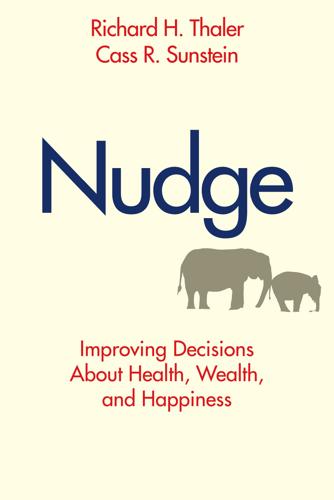
Nudge: Improving Decisions About Health, Wealth, and Happiness
by
Richard H. Thaler
and
Cass R. Sunstein
Published 7 Apr 2008
In 2003 a group of economists led by Al Roth at Harvard pointed out these problems to initially skeptical Boston school administrators. After letting the economists poke around in the internal data, the administrators became convinced of their system’s flaws.6 In response, they adopted the economists’ new strategy-proof choice mechanism, based on one used to match hospitals and medical residents. The mechanism does not penalize parents who are unsophisticated about the choice process, allowing them to spend time visiting schools and seeing teachers, rather than estimating the level of competition to get into each school. In return, administrators do not have to guess about parents’ true preferences so that the policy can be adjusted properly based on future feedback.
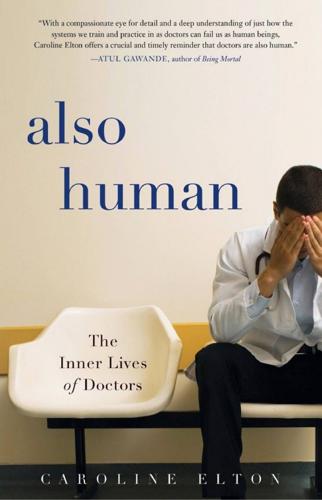
Also Human: The Inner Lives of Doctors
by
Caroline Elton
Published 1 Mar 2018
What this resident is describing here is a catastrophic erosion of empathy; in the end she changed specialty because she didn’t want to respond to her patients in this way. If this resident was a lone example it would be a personal problem for that doctor, and for her patients. But the situation is much more worrying than that. A recent systematic review concluded that nine out of eleven studies of medical students, and six out of seven studies of medical residents, reported a consistent decline in empathy as training progressed. Some of the reasons given for this finding include sleep deprivation, excessive workload, mistreatment by superiors, and lack of positive role models. In other words, the environment in which doctors work has a significant impact on their capacity to respond empathically to patients.
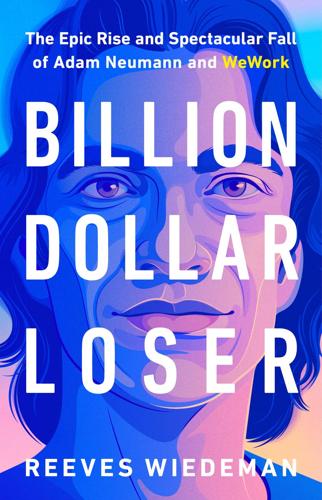
Billion Dollar Loser: The Epic Rise and Spectacular Fall of Adam Neumann and WeWork
by
Reeves Wiedeman
Published 19 Oct 2020
Two weeks before their tenth wedding anniversary, Avivit and Doron got divorced. Adam later described this as the hardest moment of his life. He grew bitter toward his mother as she dragged Adam and Adi to more new homes. Soon after the divorce, the three Neumanns moved to Indianapolis, where Avivit finished her medical residency. Adam struggled to adapt again, this time to a new country where he didn’t speak the language—the American government chopped off the last n from the family surname—at an already difficult juncture. “He fell apart,” Avivit said of her son. In Indianapolis, Avivit took Adam to see a child psychiatrist, who handed him a glittery wand.
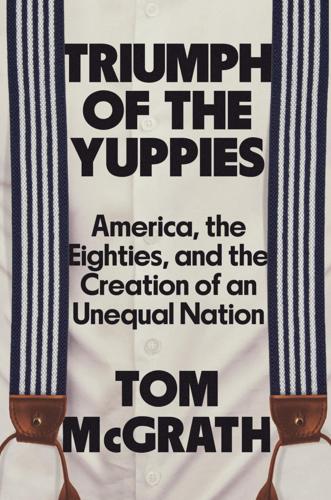
Triumph of the Yuppies: America, the Eighties, and the Creation of an Unequal Nation
by
Tom McGrath
Published 3 Jun 2024
The mood on campus was about breaking free from conformity and embracing your individuality—although, as Palley would later come to note wryly, she and her friends all expressed that individuality in precisely the same way: with long hair and blue jeans. Palley graduated in 1972 and left Philadelphia for Paris, where she ran a bookstore for a couple of years. When she returned to the US, she and her young husband—a medical resident—were certain of one thing: They would not live in the suburbs. “I came back and did not want to go back to that suburban life and fitting into that straitjacket of being,” she said later. “I wanted to live my ideals, which had to do with equality and being around all kinds of people.” The couple ended up buying a house in the Fairmount section of Philadelphia, close to the impressive Philadelphia Museum of Art and only about a mile from the Center City neighborhood, where Steve Poses had opened Frog.
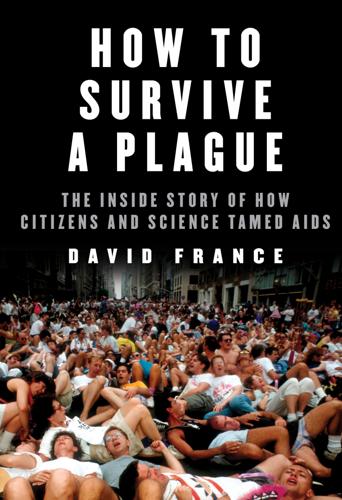
How to Survive a Plague: The Inside Story of How Citizens and Science Tamed AIDS
by
David France
Published 29 Nov 2016
But he wanted to end on an optimistic note. “You’re showing great leadership,” he said reassuringly. “Epidemics come and epidemics go. Keep calm and don’t be too upset.” Almost immediately after he descended the stairway, one of the young physicians touched his arm, introducing himself as chief medical resident at the NYU Medical Center. He spoke in the lyrical cadence of a native Georgian. He hailed from Columbia, a city two hours east of the CDC headquarters. “I’ve had PCP,” he said. Every available statistic counted his life expectancy to be a few months. Curran thought what an idiot he was to tell these people to keep calm.
…
Your body will either handle it or…” She patted him on the leg and smiled. He had six to eighteen months of life left to enjoy, she told him. She pulled a business card out of her lab coat. “Here’s the number of Dr. Stuart Nichols. He’s starting a support group,” she said. “I think you should go—if you beat this bout.” A medical resident followed her into his room and coaxed out of Callen the details of his life to include in a case report for the CDC. In poetry and lyrics, and occasional short stories, Callen had sometimes looked back at his long history of sexual exploration, which began at age seventeen. This was the first time he made that journey with a calculator.
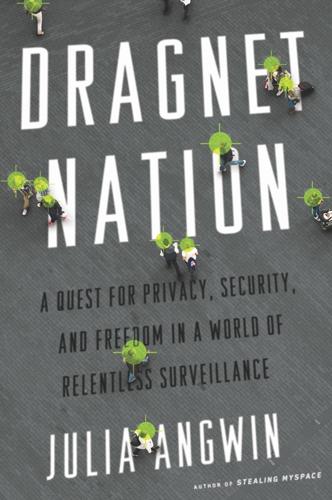
Dragnet Nation: A Quest for Privacy, Security, and Freedom in a World of Relentless Surveillance
by
Julia Angwin
Published 25 Feb 2014
Off-the-Record is a volunteer project led by founder Ian Goldberg, who is now a professor at the University of Waterloo. Adium is an open source project led by Evan Schoenberg. There wasn’t much information about him on the website, so I called him up. It turned out he was an ophthalmologist finishing his fourth year of medical residency. He started Adium in college and had been trying to keep it up. “I thought when I went to medical school I was going to make the transition—I would hand the reins over to someone else,” Schoenberg told me. (He had time to talk because it was a quiet day at the hospital.) “But there was never anyone with programming experience who seemed to want to get involved in leadership.”
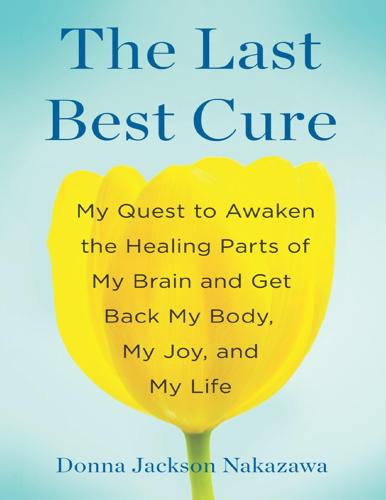
The Last Best Cure: My Quest to Awaken the Healing Parts of My Brain and Get Back My Body, My Joy, a Nd My Life
by
Donna Jackson Nakazawa
Published 21 Feb 2013
Before that, she spent most of her time working in innercity Manhattan, getting her start in medicine working with women and children suffering from human immunodeficiency virus (HIV)—in Harlem. She walks the hard path with patients, incorporating the best that traditional medicine has to offer with alternative practices many patients have never tried or even heard of before. Although she has only been at Hopkins for a year, all second-year medical residents are already required to do an outpatient rotation in integrative medicine with RowlandSeymour. Her practice is full, and her wait list long. “You’ve been through a great deal in a relatively short period of time,” she says. She looks up at me. Her brown eyes are penetrating and bright behind wire-rimmed glasses.
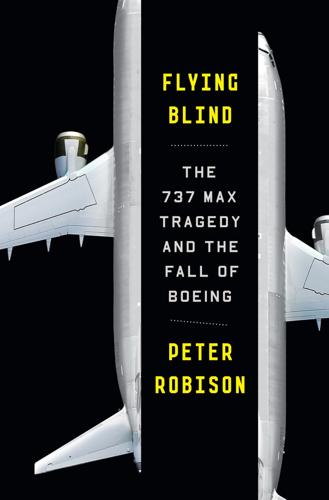
Flying Blind: The 737 MAX Tragedy and the Fall of Boeing
by
Peter Robison
Published 29 Nov 2021
Tarek made the oversized poster showing photos of the victims that his sister held up for the cameras, and corresponded with experts in risk modeling to help understand where the FAA’s analysis was lacking. Samya had stayed with his family for several months the previous year while her boyfriend was doing a medical residency at UC San Francisco. She had played a lot with Tarek’s two young children. The hardest part was thinking about the world that was lost—the Thanksgivings, the stories she’d bring home about her accomplishments and travels, and, someday, kids of her own and more young cousins around the table.
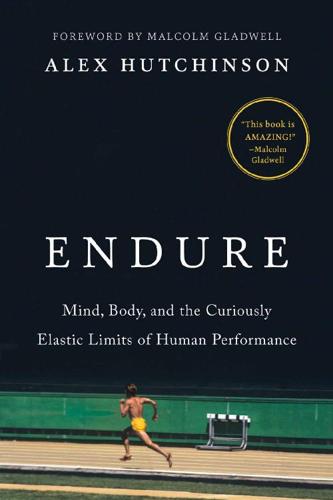
Endure: Mind, Body, and the Curiously Elastic Limits of Human Performance
by
Alex Hutchinson
Published 6 Feb 2018
I want to slip out of the booth and get back down to the side of the track—to feel the crackling tension in the assembled crowd, to hear the rasp of Kipchoge’s breath as he runs past, and to look into his eyes as he pushes deeper into the unknown. In 1991, Michael Joyner, an ex-collegiate runner from the University of Arizona who was completing a medical residency at the Mayo Clinic in Minnesota, proposed a provocative thought experiment. The limits of endurance running, according to physiologists, could be quantified with three parameters: aerobic capacity, also known as VO2max, which is analogous to the size of a car’s engine; running economy, which is an efficiency measure like gas mileage; and lactate threshold, which dictates how much of your engine’s power you can sustain for long periods of time.
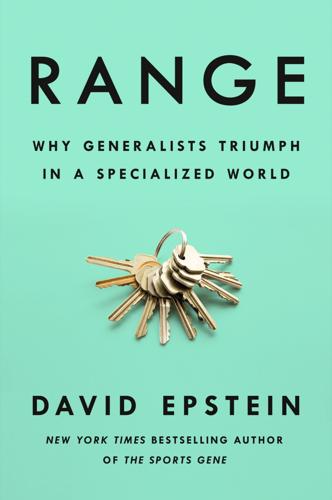
Range: Why Generalists Triumph in a Specialized World
by
David Epstein
Published 1 Mar 2019
Life expectancy in countries at the biomedical cutting edge, like the United Kingdom and the United States, recently declined after decades of improvement. The flu annually kills hundreds of thousands of people worldwide while humanity fights it with a cumbersomely produced vaccine from the 1940s. Casadevall’s mother is ninety-three, and on five medications that were available when he was a medical resident in the 1980s. “Two of them are older than I am,” he said, and two others are barely younger. “I cannot believe we can’t do better.” He paused for a moment, tilted his head, and leaned forward. “If you write an interdisciplinary grant proposal, it goes to people who are really, really specialized in A or B, and maybe if you’re lucky they have the capacity to see the connections at the interface of A and B,” he told me.
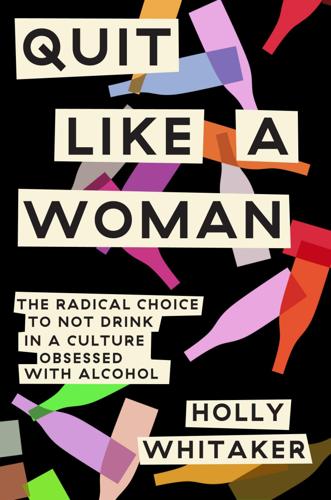
Quit Like a Woman: The Radical Choice to Not Drink in a Culture Obsessed With Alcohol
by
Holly Glenn Whitaker
Published 9 Jan 2020
There was something so absolutely desperate in me when I got sober, a calling and a purpose like I’d never known. I couldn’t think about anything else than how broken the field of addiction recovery was. That my insurance didn’t cover the treatments I needed. That doctors who prescribe addictive drugs aren’t trained in addiction medicine, but attend Twelve Step meetings as part of their medical residency. That people who are sick, who need help, are given prison sentences instead of care. That humans who are labeled addicts and alcoholics are treated as hopeless and worthless, liars and cheats, and are stripped of their dignity and force-fed treatments many of them don’t want, that don’t even work.

The Undoing Project: A Friendship That Changed Our Minds
by
Michael Lewis
Published 6 Dec 2016
He had never felt the impulse to question authority or flout convention, and had no talent for either. “I was never shocked and disappointed before in my life,” he said. “I was always very obedient. Law-abiding. I vote in all elections. I show up at every university staff meeting. I’ve never had an altercation with the police.” In 1985, he was accepted as a medical resident at the Stanford University hospital. At Stanford he began, haltingly, to voice his professional skepticism. One night during his second year, he was manning the intensive care unit and was assigned to keep a young man alive long enough to harvest his organs. (The American euphemism—“harvesting”—sounded strange to his ears.
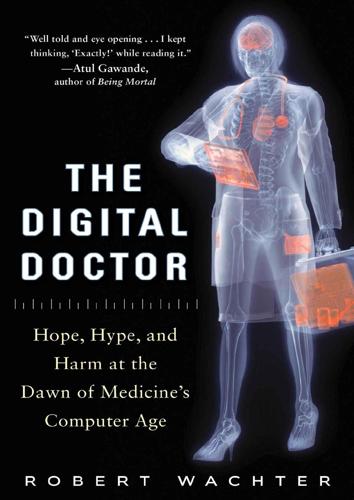
The Digital Doctor: Hope, Hype, and Harm at the Dawn of Medicine’s Computer Age
by
Robert Wachter
Published 7 Apr 2015
But over the past five years, tens of billions of dollars of federal incentive payments have helped increase the adoption of electronic health records by hospitals and doctors’ offices from about 10 percent to about 70 percent. When it comes to technology, we’ve been like a car stuck in a ditch whose spinning tires suddenly gain purchase, so accustomed to staying still that we were totally unprepared for that first lurch forward. When I was a medical resident in the 1980s, my colleagues and I performed a daily ritual that we called “checking the shoebox.” All of our patients’ blood test results came back on flimsy slips that were filed, in rough alphabetical order, in a shoebox on a small card table outside the clinical laboratory. This system, like so many others in medicine, was wildly error-prone.
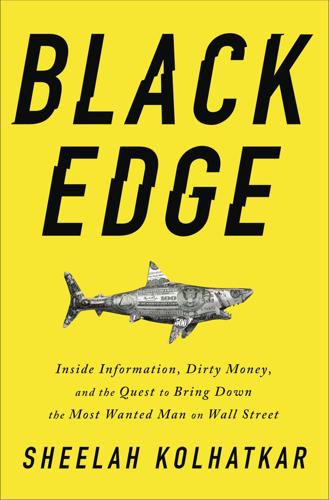
Black Edge: Inside Information, Dirty Money, and the Quest to Bring Down the Most Wanted Man on Wall Street
by
Sheelah Kolhatkar
Published 7 Feb 2017
CHAPTER 11 UNDEFEATABLE Like many people who immigrate to America from faraway places, Mathew Martoma’s parents dreamed of what their children might eventually achieve there. They had especially high expectations for their firstborn son, whom they named Ajai Mathew Mariamdani Thomas. Martoma’s mother, Lizzie Thomas, was a twenty-six-year-old medical resident in Michigan when he was born, in 1974. Both she and Martoma’s father, Bobby Martoma, were Christians from Kerala, located in India’s tropical south. Bobby emigrated in 1964 at age nineteen to study mechanical engineering in the United States; after graduating from Howard University, he took a job as an engineer with the Ford Motor Company in Michigan.

Mbs: The Rise to Power of Mohammed Bin Salman
by
Ben Hubbard
Published 10 Mar 2020
The Saudi Foreign Ministry accused Canada of “blatant interference in the internal affairs” of Saudi Arabia, gave the Canadian ambassador to Riyadh twenty-four hours to leave, and threatened to freeze trade and investment. It canceled flights by the Saudi national airline to Canada; pulled the Saudi ambassador from Ottawa; and announced the withdrawal of Saudi students from Canadian universities. That upended the lives of thousands of students, including about eight hundred doing medical residencies at Canadian hospitals. The Saudi Foreign Ministry even raised the specter of a tit-for-tat response, saying that further criticism would give the kingdom the right to interfere in Canada’s domestic affairs. The kingdom rallied its media to demonize Canadians, hosting commentators on air who claimed that Canada persecuted women and airing a montage about “the worst Canadian prisons,” saying they had terrible food and medical care, and that 75 percent of prisoners had died before trial between 2015 and 2017, a hugely dubious claim.
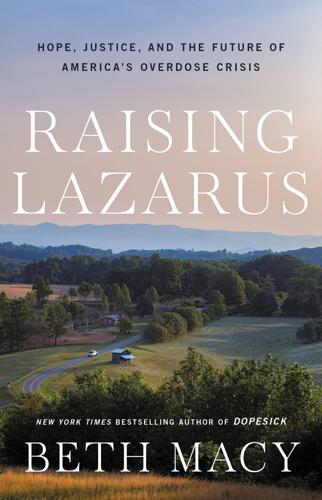
Raising Lazarus: Hope, Justice, and the Future of America’s Overdose Crisis
by
Beth Macy
Published 15 Aug 2022
Governors with medical schools under their authority should make state funding contingent on curricula that ensure all graduating physicians know how to recognize and treat addiction and pain. Right now, the typical doctor has between one and four hours of training in those areas, and many leave residencies without the benefit of clinical practice. President Biden should do the same with federally funded medical-residency programs. The federal government presently puts $10 billion a year into them—when most are still producing doctors who don’t know how to treat a disease that takes the lives of more than 100,000 people annually. Instead of just saying he supports harm reduction, Biden should lead efforts to end the ban on the federal funding of syringes.
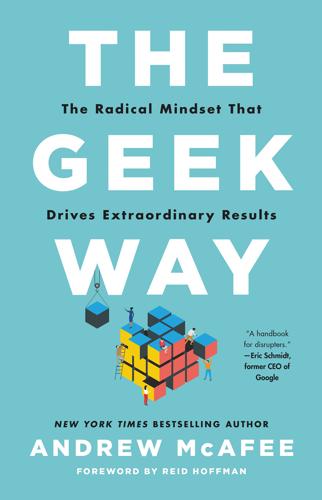
The Geek Way: The Radical Mindset That Drives Extraordinary Results
by
Andrew McAfee
Published 14 Nov 2023
I want to tell his story as we begin our explanation of the geek way because it highlights the critical importance of not only being right, but also being able to convincingly explain why you’re right. The difference between the two states can be the difference between changing the world and losing your mind. The Germ of an Idea In 1846 Ignaz Semmelweis, who was working as what we’d now call a chief medical resident at Vienna General Hospital, noticed that one of its two birth clinics was much more deadly than the other. About 10 percent of the women in the First Clinic died within days of giving birth, from what had long been called childbed fever.7 In the Second Clinic, meanwhile, death rates were two and a half times lower, at around 4 percent.
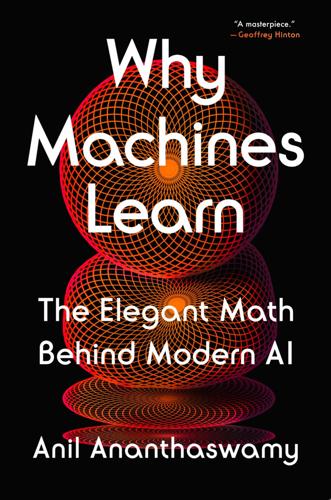
Why Machines Learn: The Elegant Math Behind Modern AI
by
Anil Ananthaswamy
Published 15 Jul 2024
After having introduced the curse of dimensionality, Bellman writes in Dynamic Programming, “Since this is a curse which has hung over the head of the physicist and astronomer for many a year, there is no need to feel discouraged about the possibility of obtaining significant results despite it.” Far from being discouraged, PCA reveals the awesome power of dimensionality reduction. That’s our next stop. CHAPTER 6 There’s Magic in Them Matrices When Emery Brown was doing his medical residency to become an anesthesiologist, one of his attending doctors said to him, “Now, watch this.” All of a sudden, the patient in whom they were inducing anesthesia fell unconscious. It was a profound moment. Now, after decades of practice, Brown—a professor of anesthesia at Harvard Medical School’s Massachusetts General Hospital, a computational neuroscientist at MIT, and a trained statistician and applied mathematician—still finds the transition from consciousness to unconsciousness in his patients “amazing.”

Machines of Loving Grace: The Quest for Common Ground Between Humans and Robots
by
John Markoff
Published 24 Aug 2015
“His facts are almost always wrong; his insight into programming is so poor that he classifies as impossible programs a beginner could write; and his logical insensitivity allows him to take his inability to imagine how a particular algorithm can be carried out, as reason to believe no algorithm can achieve the desired purpose.”14 Winograd would eventually break completely with Papert, but this would not happen for many years. He came to Stanford as a professor in 1973, when his wife, a physician, accepted an offer as a medical resident in the Bay Area. It was just two years after Intel had introduced the first commercial 4004 microprocessor chip, and trade journalist Don Hoefler settled on “Silicon Valley U.S.A.” as shorthand for the region in his newsletter Microelectronics News. Winograd continued to work for several years on the problem of machine understanding of natural language very much in the original tradition of SHRDLU.
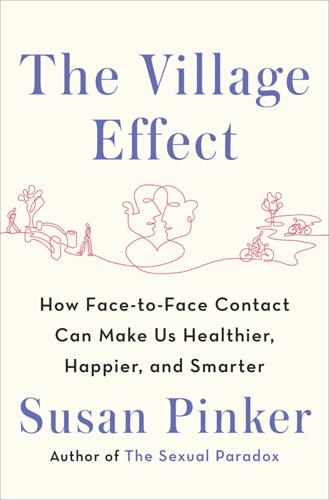
The Village Effect: How Face-To-Face Contact Can Make Us Healthier, Happier, and Smarter
by
Susan Pinker
Published 30 Sep 2013
The Real God of 12-Step In January 2009, the New York Times Magazine ran a profile of Dr. Drew Pinsky, an addictions specialist and the star of the reality TV shows Sober House and Celebrity Rehab with Dr. Drew. Pinsky’s decision to pursue addiction medicine as a career—his “burning bush moment,” as he called it—came while he was a medical resident providing care to recovering alcoholics and addicts at a Pasadena hospital. “I watched these people—these young people—go from dying to better than they ever knew they could be. And I was like, ‘Whoa.’ In medicine you go from dying to chronically ill. You don’t go from dying to better than you ever knew you could be.
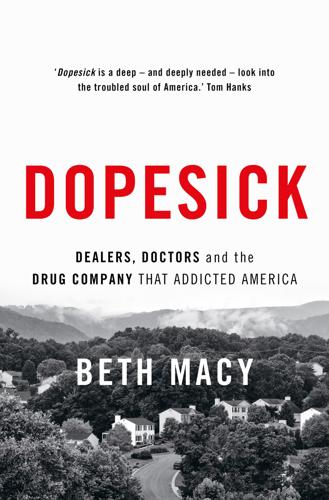
Dopesick: Dealers, Doctors and the Drug Company That Addicted America
by
Beth Macy
Published 4 Mar 2019
A chain-smoking doctor in Bland, Virginia, was so blatantly in favor of graft that she posted a signup sheet in her office, soliciting reps to sponsor her daughter’s upcoming birthday party at Carowinds, an amusement park—and one (not a Purdue rep) did. She even accepted cartons of cigarettes emblazoned with a sticker for Celexa, the antidepressant manufactured by Forest Laboratories: another gift from another clever rep. * Steve Huff was in medical residency training in the mid-1990s when he sampled his first taste of pharmaceutical swag—and not just by way of stickers, golf balls, and pens adorned with drug company names. “We were impressionable young doctors, fresh meat with a lifetime of prescribing ahead, and they flocked to us,” he told me.
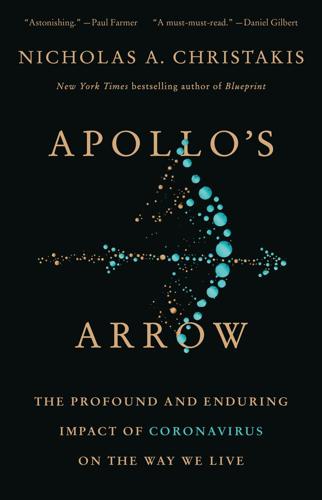
Apollo's Arrow: The Profound and Enduring Impact of Coronavirus on the Way We Live
by
Nicholas A. Christakis
Published 27 Oct 2020
This may be a common political way of coping with pandemic disease, but it makes no public health sense. I live in Norwich, Vermont, a rural town of three thousand people. When I became aware of the pandemic in January 2020, I foolishly thought to myself, Okay, it’s going to come here, but we’ll get it six months after all the big cities in the USA. And what happened? In late February, a medical resident returned from Italy to Hanover, New Hampshire, home of Dartmouth College and just one mile away from my town, across the Connecticut River that divides the two states. Although he was a doctor himself and had been experiencing respiratory symptoms for which he sought care, he failed to obey instructions to self-isolate and went to a large (aptly named) “mixer” of graduate students and faculty, where he infected other people in my neighborhood.
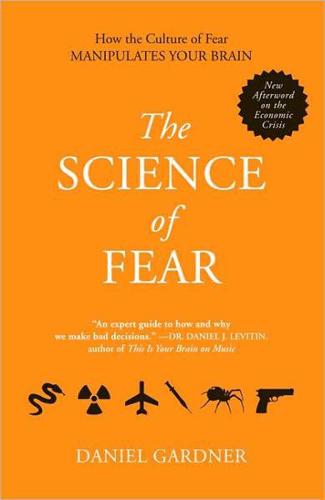
The Science of Fear: How the Culture of Fear Manipulates Your Brain
by
Daniel Gardner
Published 23 Jun 2009
This is actually more difficult than it sounds. Psychologists have found that people not only accept the idea that other people’s thinking may be biased, they tend to overestimate the extent of that bias. But almost everyone resists the notion that their own thinking may also be biased. One survey of medical residents, for example, found that 61 percent said they were not influenced by gifts from drug company salespeople, but only 16 percent said the same of other physicians. It’s as if each of us recognizes that to err is human, but, happily for us, we are not human. But even if we accept that we, too, are human, coping with the brain’s biases is not easy.
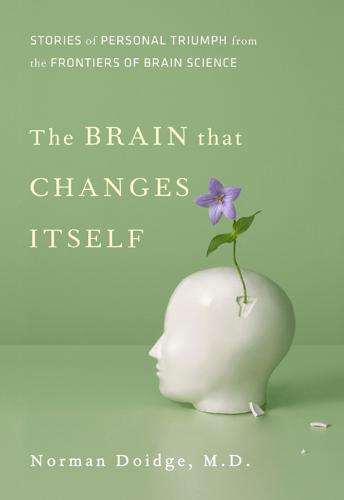
The Brain That Changes Itself: Stories of Personal Triumph From the Frontiers of Brain Science
by
Norman Doidge
Published 15 Mar 2007
After becoming a physician, he gave up medicine and switched to basic research. He asked questions that seemed to defy common sense, such as, “Are eyes necessary for vision, or ears for hearing, tongues for tasting, noses for smelling?” And then, when he was forty-four years old, his mind ever restless, he switched back to medicine and began a medical residency, with its endless days and sleepless nights, in one of the dreariest specialties of all: rehabilitation medicine. His ambition was to turn an intellectual backwater into a science by applying to it what he had learned about plasticity. Bach-y-Rita is a completely unassuming man. He is partial to five-dollar suits and wears Salvation Army clothes whenever his wife lets him get away with it.

Unscripted: The Epic Battle for a Media Empire and the Redstone Family Legacy
by
James B Stewart
and
Rachel Abrams
Published 14 Feb 2023
Cynthia Littleton, business editor of the Hollywood trade journal Variety, had emailed him (on December 8) about “a rumor out there re Les being the focus of a sex harass story (not sure who).” That was the end of it, or so it seemed. * * * — The Weinstein articles had also dredged up painful memories for Dr. Anne Peters, the director of the clinical diabetes program at the University of Southern California, where she was also a professor. Since finishing her medical residency at Stanford and moving to Los Angeles, she had developed a reputation as the go-to doctor for diabetes and related issues. Among her prominent clients was Arnold Kopelson, still at the peak of his fame after winning an Oscar for Platoon. Kopelson was also a friend of Peters’s, and at Kopelson’s urging, in 1999 she had agreed to see a new patient who, like Kopelson, was diabetic: Les Moonves.

Doppelganger: A Trip Into the Mirror World
by
Naomi Klein
Published 11 Sep 2023
When data came in that was particularly striking, he could not keep the results to himself, which meant that I knew about postnatal incontinence and vaginal tearing before I hit puberty—and very much wished that I did not. There were other distressing details as well. He and his colleagues trained medical residents, and one evening in the late 1970s, when I was about eight years old, he came home bubbling with excitement about an innovation they had installed in a couple of the examination rooms: one-way glass. Before, he explained, he and the other doctors had needed to hover over the residents’ shoulders to make sure they were providing patients with the right kind of care, which tended to make everyone self-conscious, resident and patient alike.
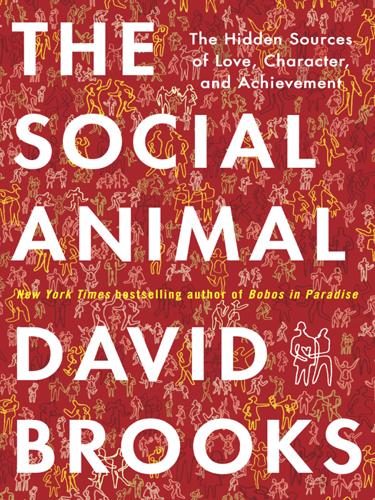
The Social Animal: The Hidden Sources of Love, Character, and Achievement
by
David Brooks
Published 8 Mar 2011
They lent each other money, drove each other to the airport, helped each other load U-Hauls and generally provided all the services that people from an extended family might provide for one another in a more traditional society. Harold was sure that his group was filled with the most talented proto-geniuses that had ever been assembled. One of them was a singer-songwriter, another was doing her medical residency, a third did art and graphic design. Even the ones who had boring jobs had interesting sidelights—hot-air ballooning, extreme sports, or great potential as a future contestant on Jeopardy!. There was an unofficial ban against Groupcest, dating within the group. But an exception was made if the couple involved got really serious about each other.

Hunting in the Shadows: The Pursuit of Al Qa'ida Since 9/11: The Pursuit of Al Qa'ida Since 9/11
by
Seth G. Jones
Published 29 Apr 2012
Take Afghanistan: by 2007, U.S. forces were supporting a government in which 82 percent of Afghans had confidence in President Hamid Karzai, only 5 percent supported Taliban forces, and a striking 71 percent supported U.S. military forces in the country.85 Iraq was more controversial because of the U.S. invasion, though by 2007 Nouri al-Maliki had taken over as prime minister and was fighting an increasingly unpopular al Qa’ida in Iraq. Still, the perception that the wars were “against Muslims” persisted. During Hasan’s medical residency and postresidency fellowship, his superiors and colleagues observed his views becoming increasingly radical. Witnesses reported that Hasan openly supported many of the principles of violent Islamist extremism in class and in written academic papers.86 In the last month of his residency at Walter Reed, he fulfilled an academic requirement for graduation to make a scholarly presentation on psychiatric issues by giving an off-topic lecture on violent Islamic extremism.

My Own Country: A Doctor's Story of a Town and Its People in the Age of AIDS
by
Abraham Verghese
Published 1 Jan 1994
Death from infection used to be common on bone-marrow-transplant wards and on leukemia wards. Now, he pointed out, with newer, more powerful antibiotics, better diagnostic tools, and a new understanding of immunology, ID physicians were getting the upper hand. But I also had a selfish reason for picking infectious diseases. Most medical residents flocked to cardiology or gastroenterology or pulmonary medicine—specialties rich in invasive procedures (and therefore very lucrative). Fellowships in these areas were very competitive. Unlike the internship year (where foreign graduates were in much demand and were critical to the survival of many inner-city hospitals), both foreign and American medical graduates were competing for the limited number of fellowship slots across the country.

The Billionaire's Apprentice: The Rise of the Indian-American Elite and the Fall of the Galleon Hedge Fund
by
Anita Raghavan
Published 4 Jun 2013
The markets wheezed and sputtered in the late 1960s, so much so that by mid-1973, when Gupta’s Harvard class was set to graduate, the risk to stock investors of the three I’s—interest rates, inflation, and the impeachment of President Richard Nixon—had risen exponentially. Harvard MBAs angled to land “residencies,” much like medical residencies, at big, prestigious companies such as US Steel, 3M, Procter & Gamble, and General Mills. The traditional career path for the men—mostly white men and very few women or men of color—who came of MBA age in the 1970s was to start at the bottom of the corporate ladder and work to the top. Getting an MBA from Harvard allowed one to skip a slew of steps and offered the possibility of a country-club lifestyle after graduation.
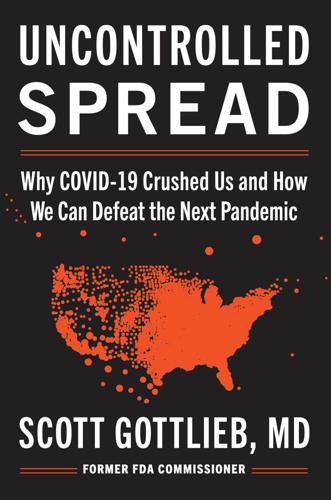
Uncontrolled Spread: Why COVID-19 Crushed Us and How We Can Defeat the Next Pandemic
by
Scott Gottlieb
Published 20 Sep 2021
This is just some of the foundation on which a flexible approach to pandemic preparedness will have to be constructed. The night of September 11, 2001, after the attack on the World Trade Center, I was providing medical care at a triage center at Chelsea Piers on the West Side of Manhattan, close to the site of the toppled buildings. I was a third-year medical resident at Mount Sinai Hospital, and had been assigned to help staff the facility.18 When I got to the site, I was stunned. In that single day, an enormous field hospital had been erected, with hundreds of treatment rooms and dozens of fully equipped surgical suites. After the 1993 attack on the World Trade Center, and countless other terrorist incidents, someone had decided that New York City needed to be able to handle a mass-casualty event that could exhaust its existing hospitals and medical resources.
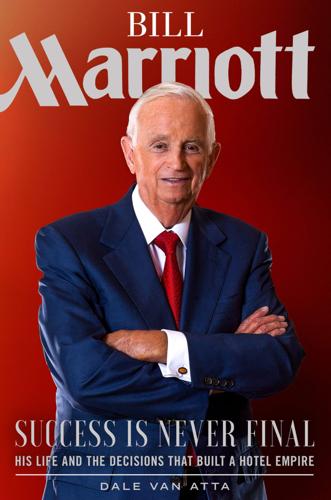
Bill Marriott: Success Is Never Final--His Life and the Decisions That Built a Hotel Empire
by
Dale van Atta
Published 14 Aug 2019
Many open-heart patients in the 1960s who survived surgery died in the days immediately following the operation. On the second night, Bill and Donna received a terrible phone call in their hotel room. Debbie was not doing well, and might not make it. “We were on our knees all night praying that she might be spared,” Bill recalled. The medical resident who had been assigned to stay was fortunately there when her heart went into fibrillation. He used CPR and drugs to revive her. He shakily confided to Bill the next day that Debbie appeared to have died for two or three minutes. Neither of her parents knew for more than a decade that Debbie had had an out-of-body experience.
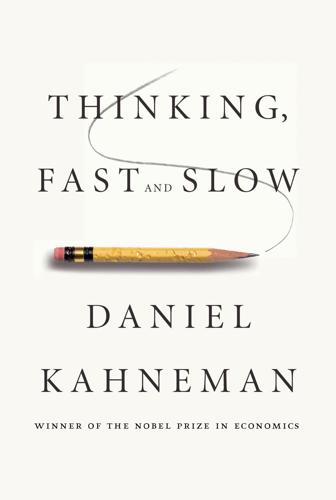
Thinking, Fast and Slow
by
Daniel Kahneman
Published 24 Oct 2011
Until the anesthesiologist Virginia Apgar intervened in 1953, physicians and midwives used their clinical judgment to determine whether a baby was in distress. Different practitioners focused on different cues. Some watched for breathing problems while others monitored how soon the baby cried. Without a standardized procedure, danger signs were often missed, and many newborn infants died. One day over breakfast, a medical resident asked how Dr. Apgar would make a systematic assessment of a newborn. “That’s easy,” she replied. “You would do it like this.” Apgar jotted down five variables (heart rate, respiration, reflex, muscle tone, and color) and three scores (0, 1, or 2, depending on the robustness of each sign). Realizing that she might have made a breakequthrough that any delivery room could implement, Apgar began rating infants by this rule one minute after they were born.
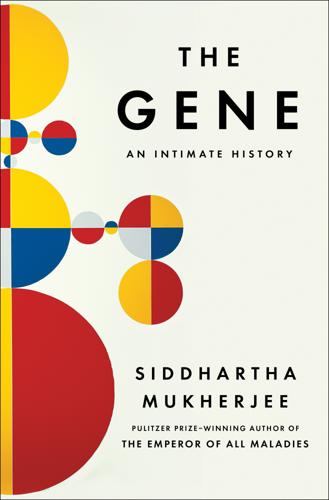
The Gene: An Intimate History
by
Siddhartha Mukherjee
Published 16 May 2016
That year, a young dentistry student named Walter Noel presented to his doctor in Chicago with an acute anemic crisis, accompanied by the characteristic chest and bone pain. Noel was from the Caribbean, of West African descent, and had suffered several such episodes over the prior years. Having ruled out a heart attack, the cardiologist, James Herrick, assigned the case rather casually to a medical resident named Ernest Irons. Acting on a whim, Irons decided to look at Noel’s blood under the microscope. Irons found a bewildering alteration. Normal red blood cells are shaped like flattened disks—a shape that allows them to be stacked atop each other, and thus move smoothly through networks of arteries and capillaries and veins, bringing oxygen to the liver, heart, and brain.
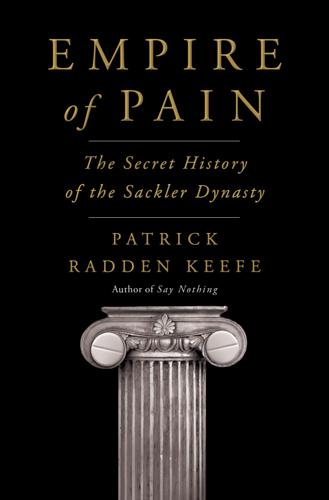
Empire of Pain: The Secret History of the Sackler Dynasty
by
Patrick Radden Keefe
Published 12 Apr 2021
One night, after a particularly grueling stint, the interns decided to throw a little party in a spare room at the hospital. They brought drinks and, abandoning their white coats, got dressed up for the occasion. Marietta wore a black knit dress that showed flashes of her pale skin underneath. The medical residents were all drinking and talking, and at a certain point in the evening people started to sing songs. Marietta was normally quite shy, but she liked to sing. So she stood up before the revelers, summoned her confidence, and launched into a song that she used to sing back in Berlin. It was a French song, “Parlez-moi d’amour”—“Speak to Me of Love”—and before she knew it, Marietta found herself leaning into the performance, crooning in a deep, sexy, cabaret-style voice.
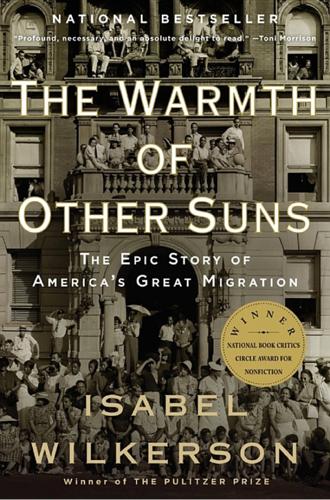
The Warmth of Other Suns: The Epic Story of America's Great Migration
by
Isabel Wilkerson
Published 6 Sep 2010
LOUIS and Pershing climbed on board with his suitcase in his hand and his back propped straight as if he were stepping onto the Queen Mary and going to France. He dusted the folds of his tweed suit and headed down the central aisle of the bus in search of a seat. The bus was not going to take him to the Big North of southern dreams but to a modest city in a border state where his brother was serving out his medical residency, and well enough out of the South. He scanned the aisle to find a place for himself. His eye caught the wooden shingle with the metal prongs on the bottom, the shingle that said COLORED on one side and WHITE on the other. It was set into holes at the top of a seat back toward the latter half of the bus.

The Meritocracy Trap: How America's Foundational Myth Feeds Inequality, Dismantles the Middle Class, and Devours the Elite
by
Daniel Markovits
Published 14 Sep 2019
Nearly a quarter of the highest earners surveyed qualified for the Review’s most extreme job classification and worked “even more punishing” hours: “The majority of them (56%) work 70 hours or more a week, and 9% work 100 hours or more.” Elite professionals have also ratcheted up their work hours. Medical residents now work such long hours that the Accreditation Council for Graduate Medical Education has sought, with limited success, to restrict them to eighty working hours per week, averaged across four weeks. Lawyers’ hours are similarly extreme. For example, between 1984 and 1990 the percentage of lawyers working over fifty-five hours per week more than tripled, and the share working more than two hundred hours per month increased by nearly half.
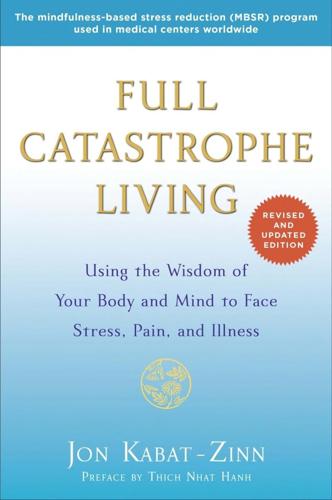
Full Catastrophe Living (Revised Edition): Using the Wisdom of Your Body and Mind to Face Stress, Pain, and Illness
by
Jon Kabat-Zinn
Published 23 Sep 2013
This, of course, requires that the doctor be skilled at truly listening to the patient’s concerns, and even going to some lengths to elicit those that the patient may be reluctant to voice. Nowadays, mindfulness in the physician-patient relationship and in clinical communications is becoming more and more a part of good medical training, both for medical students and for medical residents. And some physicians, such as Ron Epstein of the School of Medicine at the University of Rochester, are articulating the value of mindfulness in medical practice and publishing their views and research in premier medical journals. In an article in the Journal of the American Medical Society entitled “Mindful Practice,” Dr.

J.K. Lasser's Your Income Tax 2022: For Preparing Your 2021 Tax Return
by
J. K. Lasser Institute
Published 21 Dec 2021
To assure bank teller service during the busy lunch period, a bank limits tellers to 30 minutes for lunch and provides them with free meals in a cafeteria on the premises so they can eat within this time period. The value of the meals is tax free. Caution Housing as Job Requirement If housing is provided to some employees with a certain job and not others, the IRS may hold that the lodging is not a condition of employment. For example, the IRS taxed medical residents on the value of hospital lodging where other residents lived in their own apartments. Lodging must be condition of employment. This test requires evidence that the lodging is necessary for you to perform your job properly, as where you are required to be available for duty at all times.
…
Ct., 2014) Rate of tax IRC §3101 (employee) IRC §3111 (employer) Withholding required for differential wages paid IRC §3401(h), added by Heroes Earnings Assistance Tax Relief Act of 2008 Rev. Rul. 2009-11, 2009-18 IRB 896 “Wages” same as for income tax Rowan Companies, Inc., 81-1 USTC ¶9479 (S. Ct. 1981) Medical residents subject to FICA Mayo Foundation for Medical Education and Research, Supreme Court, 1/11/2011 Responsible person for withholding Edward Finley, 82 F.3d 966 (10th Cir., 1996) Mary Phillips, 73 F.3d 939 (9th Cir., 1996) Ellen L. Marino, 2004-1 USTC ¶50,262 (D. Fl. 2004) Rev. Rul. 2004-41, IRB 2004-18, 845 Responsible person must be given written IRS notice before penalty IRC §6672(b) CFO escapes liability for trust fund taxes Jose D.
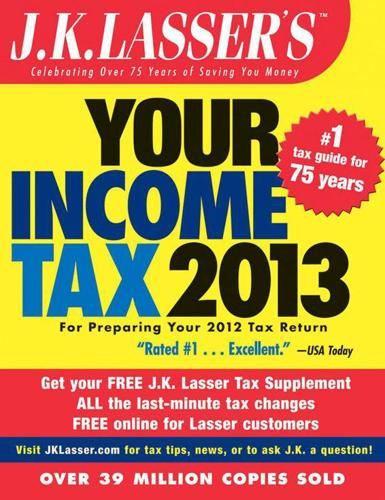
J.K. Lasser's Your Income Tax
by
J K Lasser Institute
Published 30 Oct 2012
But if you pay for the utilities yourself, you may not exclude their cost from your income. - - - - - - - - - - Caution Housing as Job Requirement If housing is provided to some employees with a certain job and not others, the IRS may hold that the lodging is not a condition of employment. For example, the IRS taxed medical residents on the value of hospital lodging where other residents lived in their own apartments. - - - - - - - - - - EXAMPLE Tyrone Jones is employed at a construction project at a remote job site. His pay is $1,500 a week. Because there are no accessible places near the site for food and lodging, the employer furnishes meals and lodging for which it charges $400 a week, which is taken out of Jones’s pay.

J.K. Lasser's Your Income Tax 2014
by
J. K. Lasser
Published 5 Oct 2013
But if you pay for the utilities yourself, you may not exclude their cost from your income. - - - - - - - - - - Caution Housing as Job Requirement If housing is provided to some employees with a certain job and not others, the IRS may hold that the lodging is not a condition of employment. For example, the IRS taxed medical residents on the value of hospital lodging where other residents lived in their own apartments. - - - - - - - - - - EXAMPLE Tyrone Jones is employed at a construction project at a remote job site. His pay is $1,500 a week. Because there are no accessible places near the site for food and lodging, the employer furnishes meals and lodging for which it charges $400 a week, which is taken out of Jones’s pay.

J.K. Lasser's Your Income Tax 2016: For Preparing Your 2015 Tax Return
by
J. K. Lasser Institute
Published 19 Oct 2015
But if you pay for the utilities yourself, you may not exclude their cost from your income. Caution Housing as Job Requirement If housing is provided to some employees with a certain job and not others, the IRS may hold that the lodging is not a condition of employment. For example, the IRS taxed medical residents on the value of hospital lodging where other residents lived in their own apartments. EXAMPLE Tyrone Jones is employed at a construction project at a remote job site. His pay is $1,500 a week. Because there are no accessible places near the site for food and lodging, the employer furnishes meals and lodging for which it charges $400 a week, which is taken out of Jones’s pay.